Martinique is a stunning Caribbean island that is home to a diverse range of flora and fauna, including an impressive variety of bird species. These beautiful creatures can be found in a variety of different habitats across the island, from lush forests and tropical gardens to coastal areas and wetlands.
Whether you’re a birdwatching enthusiast or simply appreciate the beauty of nature, Martinique is the perfect destination to explore the fascinating world of birds. In this article, we will delve deeper into the different species of birds that you can expect to see on this island paradise.
1. Stilts And Avocets
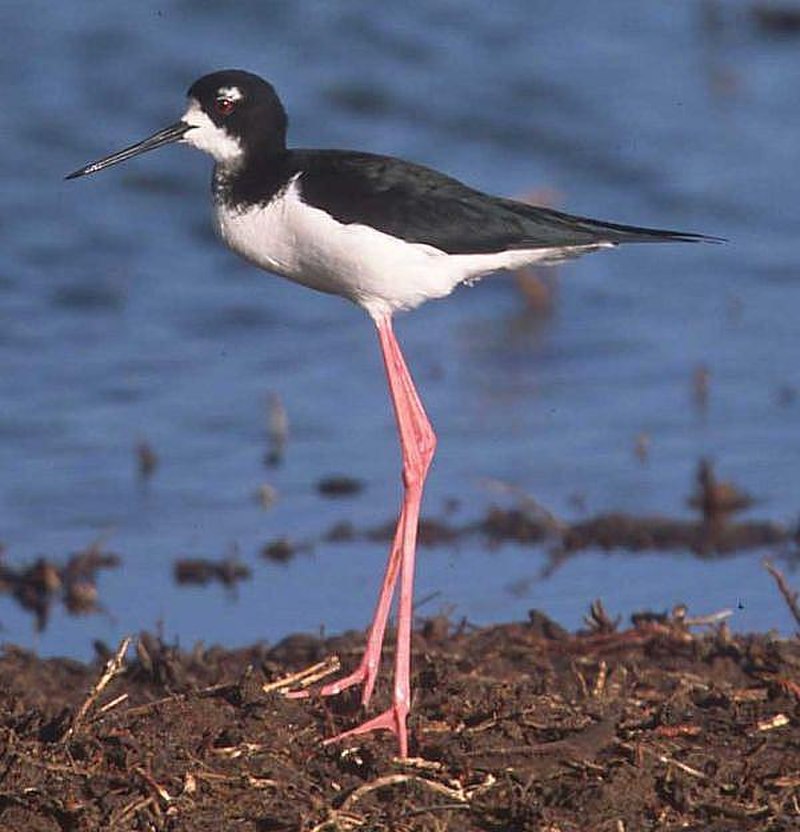
Stilts and avocets are two distinct groups of birds belonging to the family Recurvirostridae. They range in length from 30-46 cm (12-18 inches) and weigh between 140 – 435 g (4.9 – 15.3 ounces).
Males usually have slightly larger bodies than females, with long thin legs, necks and bills.
Avocet bills curve upwards uniquely while stilt beaks remain straight most times.
These wading birds live mainly near shorelines or wetlands where they feed on aquatic invertebrates like brine shrimp, insects etc., occasionally supplementing their diet with seeds or small fish too.
Stilts also inhabit open fields in search of food sources such as earthworms or grasshoppers during the non-breeding season.
Both groups migrate over large distances for warmer weathers when it gets cold outside.Scientific classification:
| Kingdom | Animalia |
| Phylum | Chordata |
| Class | Aves |
| Order | Charadriiformes |
| Suborder | Charadrii |
| Family | Recurvirostridae Bonaparte, 1854 |
Also Featured In: Most Common Birds in China, Common Algerian Birds
2. Red-Billed Tropicbird
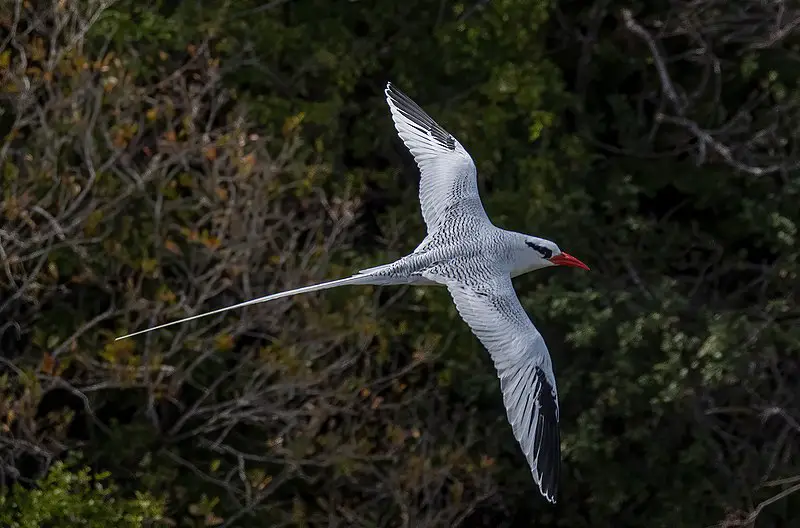
The Red-billed Tropicbird is a beautiful seabird found in tropical oceans. It has mainly white plumage, with black markings on its wings and back, along with a black mask and red bill.
These birds have distinctive long tail streamers that are twice their body length which they use to help them soar above the ocean surface while searching for food.
They primarily feed off squid, fish and crustaceans that inhabit coral reefs or deep sea areas where they can dive up to 30 meters below the water’s surface.
The Red-billed Tropicbird was once thought of as an omen of bad luck but now it serves as a reminder of how delicate our marine ecosystems are when faced with human activity such as overfishing.Scientific classification:
| Kingdom | Animalia |
| Phylum | Chordata |
| Class | Aves |
| Order | Phaethontiformes |
| Family | Phaethontidae |
| Genus | Phaethon |
| Species | P. aethereus |
Also Featured In: Native Pakistani Birds, Galapagos Birds You Should Know
3. Green Heron
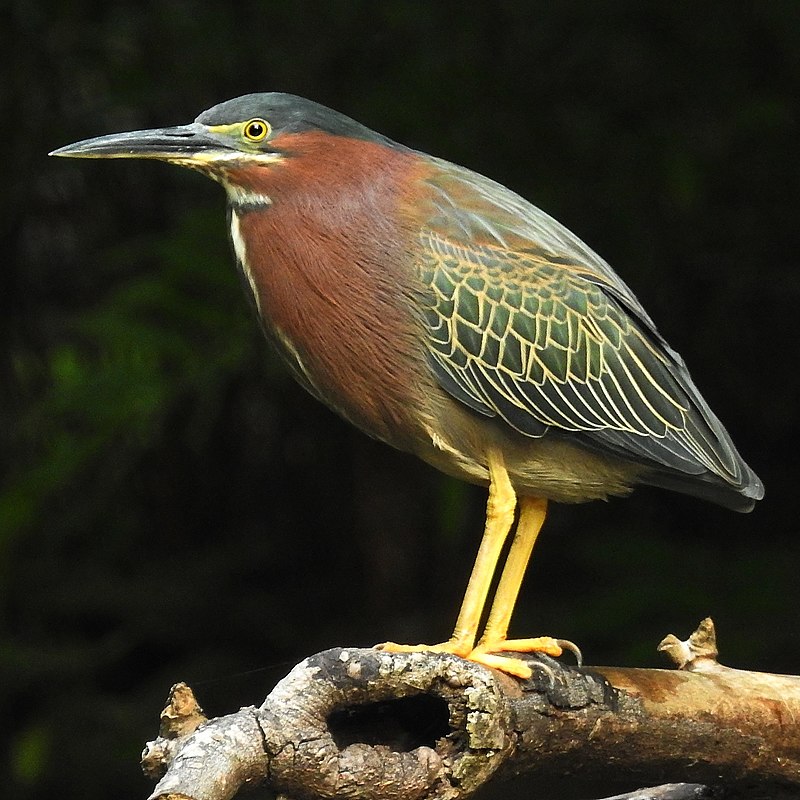
The Green Heron (Butorides virescens) is a small heron found throughout North and Central America.
It’s scientific name comes from Middle English ‘butor’ meaning bittern, combined with the Latin term for its distinctive greenish color – ‘virescens’.
For many years it was considered to be part of the same species as the Striated Heron (Butorides striata), commonly referred to as “green-backed herons”.
The nominate subspecies inhabits wetlands across much of this range, where they can be spotted stalking about in shallow water looking for fish or frogs on which to feed.
They are fascinating wading birds that have even been known to use tools such as sticks or baited lines when fishing.Scientific classification:
| Kingdom | Animalia |
| Phylum | Chordata |
| Class | Aves |
| Order | Pelecaniformes |
| Family | Ardeidae |
| Genus | Butorides |
| Species | B. virescens |
Also Featured In: Top Birds Found in Mexico, Common Southern Californian Birds
4. Procellariidae
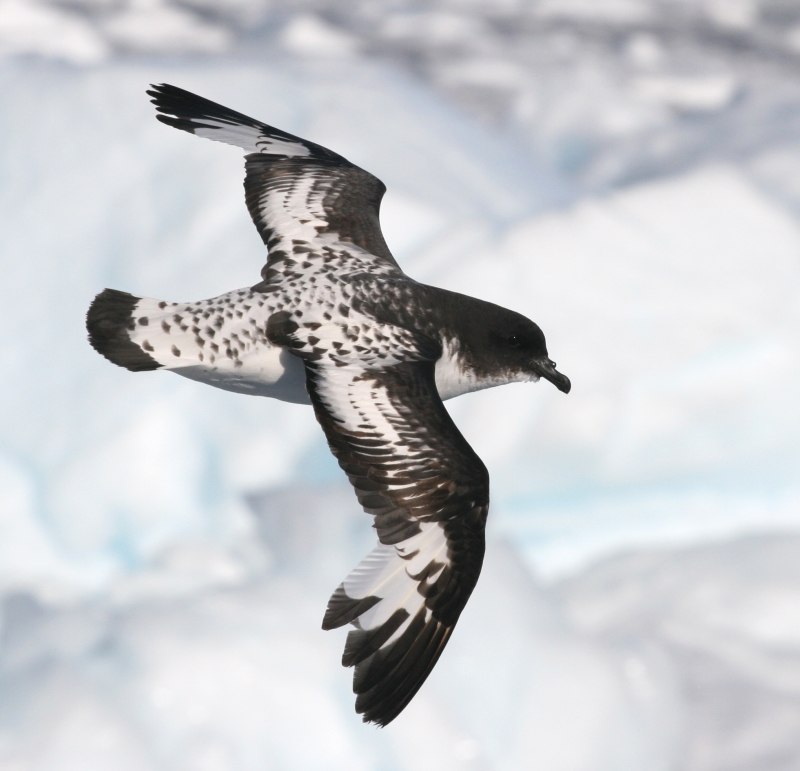
Procellariidae is a diverse family of seabirds belonging to the bird order Procellariiformes.
These birds are commonly referred to as tubenoses and include fulmarine petrels, gadfly petrels, diving petrels, prions, and shearwaters.
They range in size from the small storm-petrel which measures around 18cm long to the giant albatross which can reach up to 3 meters in length.
Generally found near oceans or coasts where they feed on fish as well as squid and other marine life depending on species.
Many procellariids will also nest inland during breeding season before returning back out at sea for most of their lives.
Their wings have specially adapted feathers that give them incredible gliding abilities allowing them literally fly with minimal effort over vast distances across oceanic regionsScientific classification:
| Kingdom | Animalia |
| Phylum | Chordata |
| Class | Aves |
| Order | Procellariiformes |
| Family | Procellariidae Leach, 1820 |
Also Featured In: Most common Birds in France, Birds You’ll Find in the Sea
5. Threskiornithidae
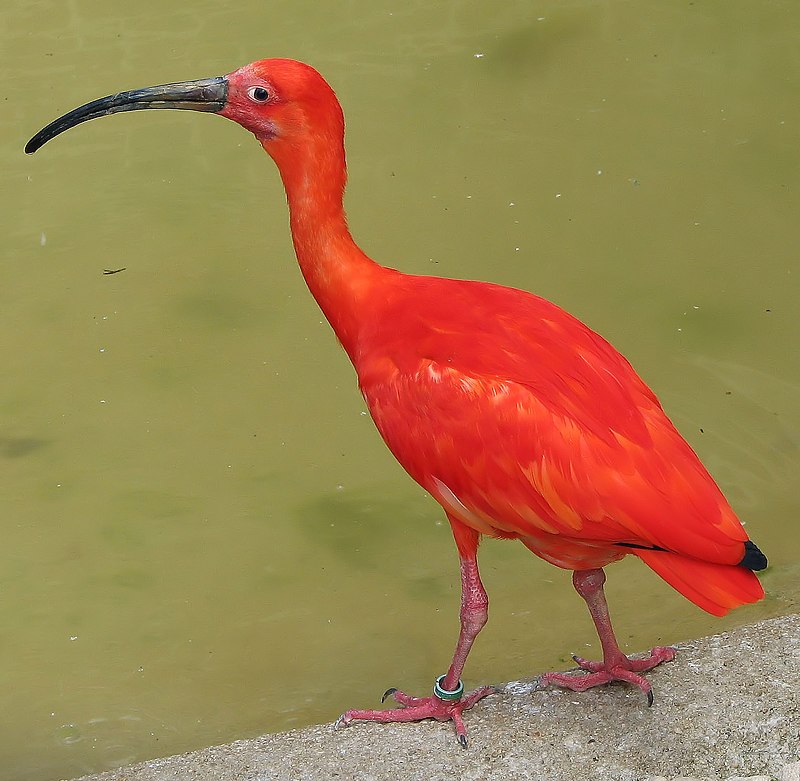
Threskiornithidae is a family of large wading birds which includes 36 species. These birds are traditionally divided into two subfamilies – the ibises and the spoonbills.
However, recent genetic analysis has shown that spoonbills actually belong to Old World ibis group, while New World ibises form an early offshoot from this lineage.
Threskiornithidse members have long curved beaks with serrated edges used for catching fish in shallow water or mudflats, as well as other aquatic invertebrates like crustaceans and mollusks.
They also feed on plant matter such as grains and seeds found close to wetlands areas where they live.
This diverse diet makes them important scavengers in their ecosystems, helping maintain healthy populations of native wildlife by controlling insect numbers and dispersing energy-rich seeds throughout wetland habitats.Scientific classification:
| Kingdom | Animalia |
| Phylum | Chordata |
| Class | Aves |
| Order | Pelecaniformes |
| Suborder | Ardei |
| Family | Threskiornithidae Richmond, 1917 |
Also Featured In: Turkey Birds You Should Know, Common Uzbekistan Birds
6. American Black Swift
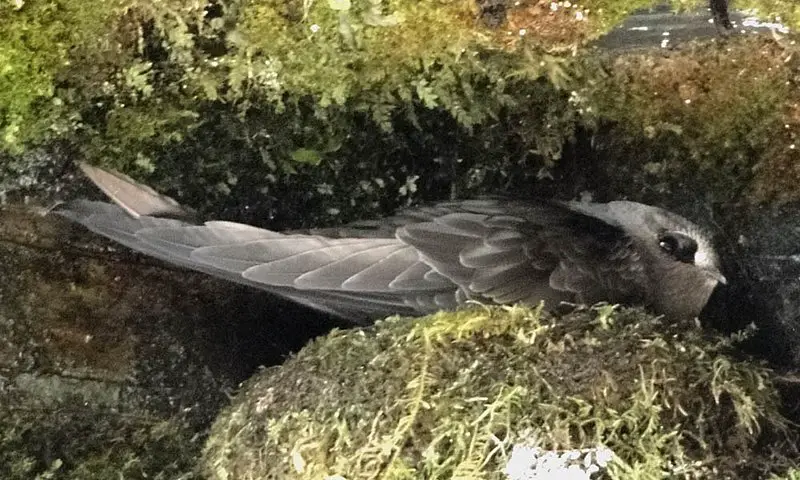
The American black swift is a species of bird that resides in North America, Central and South America as well as the Caribbean.
It was formally described by German naturalist Johann Friedrich Gmelin in 1789.
These birds prefer high mountain regions, living near fast-flowing streams or waterfalls with plenty of insects for food.
They have long wings which allow them to soar up on thermals and catch insects midair.
As their name suggests, they are almost entirely black with some lighter feathers around the neck area giving it an overall glossy look when seen from below.
Their breeding season takes place between May-August where both parents take part in caring for the young until they can fly independently after about 6 weeks old.Scientific classification:
| Kingdom | Animalia |
| Phylum | Chordata |
| Class | Aves |
| Order | Apodiformes |
| Family | Apodidae |
| Genus | Cypseloides |
| Species | C. niger |
Also Featured In: Common Birds in Canada, Black Birds that Live around United States of America
7. Semipalmated Sandpiper
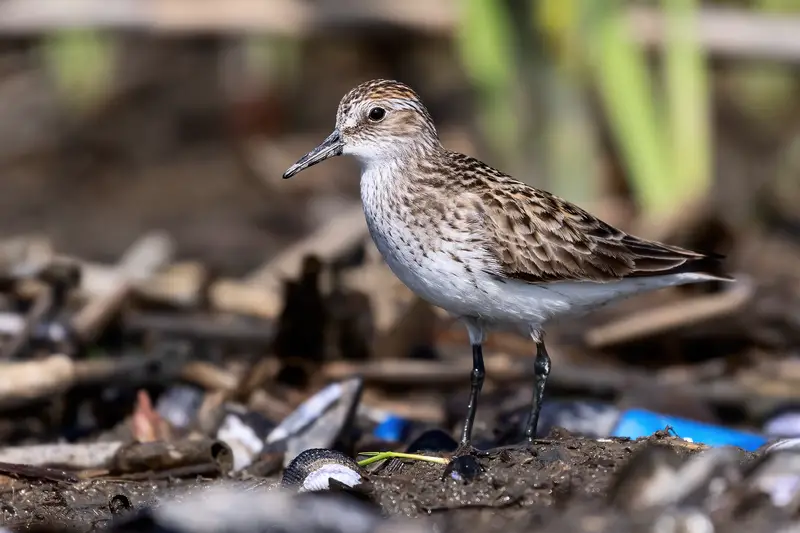
The Semipalmated Sandpiper is a small shorebird belonging to the genus Calidris. It gets its name from Latin, with ‘Calidris’ meaning “grey-coloured waterside bird” and ‘pusilla’ translating as “very small”.
This species was previously placed in the genus Ereun but it has since been moved into its own group called �stints�.
These birds are usually found near coastal areas or wetlands where they feed on insects, crustaceans, mollusks and other aquatic invertebrates.
They have brownish plumage with white underparts which helps them blend into their environment for camouflage purposes when predators come close by.
Despite being quite small compared to other shorebirds, these resilient little birds can fly long distances during migration season.Scientific classification:
| Kingdom | Animalia |
| Phylum | Chordata |
| Class | Aves |
| Order | Charadriiformes |
| Family | Scolopacidae |
| Genus | Calidris |
| Species | C. pusilla |
Also Featured In: Great Abaco Island Birds, Winged Marvels of St Martin’s: A Bird Enthusiast’s Delight
8. Orange-Cheeked Waxbill
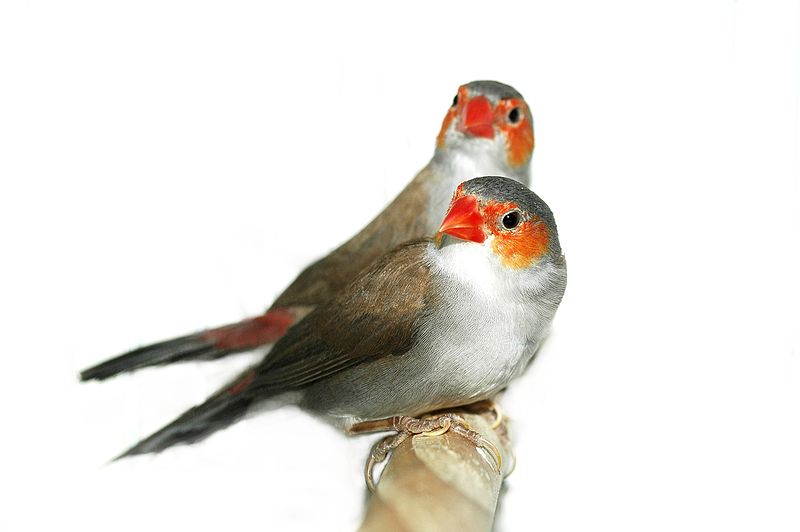
The Orange-cheeked Waxbill is a small finch native to western and central Africa. It has an orange cheek patch, giving it its name, as well as black stripes on the head and wings that stand out against its chestnut brown feathers.
This species lives in flocks of 30 or more individuals, which can be heard by their high pitched peeps echoing through the trees.
They are very acrobatic birds too – often seen flipping midair while chasing after tiny insects for food.
The global extent of occurrence for this species is estimated to be 3.6 million km2; making them quite common across their range within Africa.Scientific classification:
| Kingdom | Animalia |
| Phylum | Chordata |
| Class | Aves |
| Order | Passeriformes |
| Family | Estrildidae |
| Genus | Estrilda |
| Species | E. melpoda |
Also Featured In: Common Birds In Ghana,
9. Village Weaver
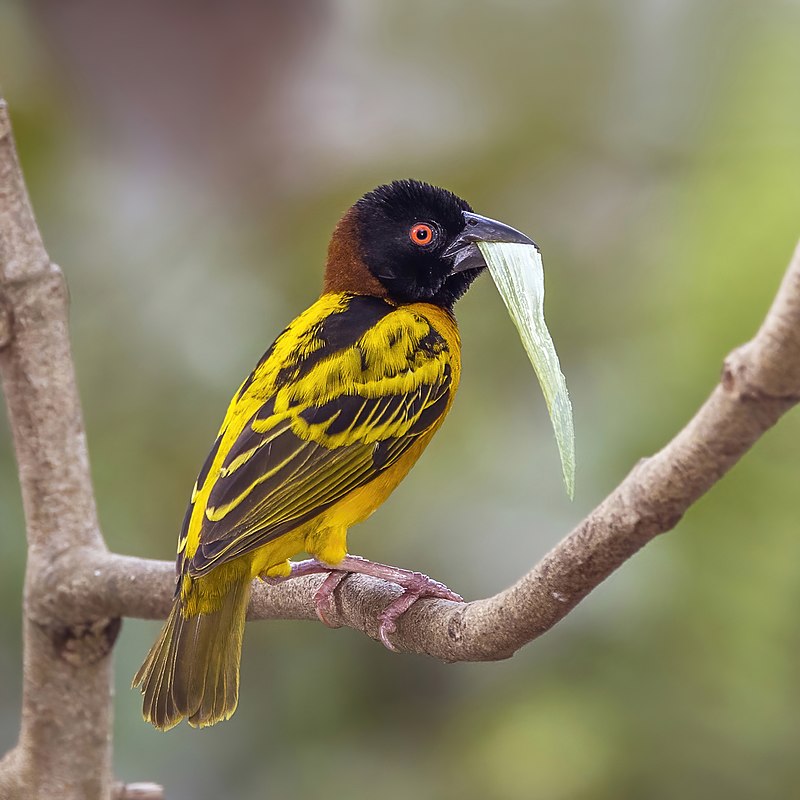
The Village Weaver is a bird found in sub-Saharan Africa, as well as on islands like Hispaniola and Martinique.
It has distinctive black heads with white spots on its back and wings.
They feed mainly on seeds but also eat some insects. The males build nests made of grasses that hang from branches or trees to attract mates during breeding season.
These birds are social creatures often seen in pairs or small groups foraging together in the same area.
Their calls are melodious chirps which can be heard throughout their range when they communicate danger or alert each other of food sources nearby.Scientific classification:
| Kingdom | Animalia |
| Phylum | Chordata |
| Class | Aves |
| Order | Passeriformes |
| Family | Ploceidae |
| Genus | Ploceus |
| Species | P. cucullatus |
Also Featured In: Birds of Malawi,
10. Common Waxbill
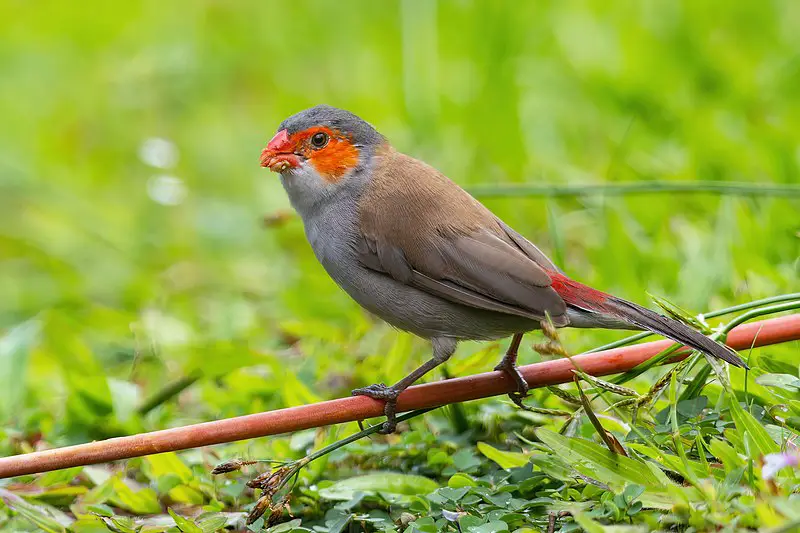
The Common Waxbill is a beautiful small passerine bird native to sub-Saharan Africa.
It has become popular in captivity and can be found all over the world, with an estimated global extent of occurrence of 10 million km2.
Its formal description was provided by Carl Linnaeus in 1758 as part of his Systema Naturae; he gave it the scientific name Estrilda astrild.
This species is mainly greyish brown or olive green on its upperparts while having chestnut colored wings and tail feathers which are tipped with white or creamy yellow.
They have red eyes, pink bills and legs, giving them an overall attractive appearance.
The Common waxbill feeds primarily on grass seeds but also takes insects occasionally when available. It breeds readily in aviaries making it a great choice for avid bird keepers.Scientific classification:
| Kingdom | Animalia |
| Phylum | Chordata |
| Class | Aves |
| Order | Passeriformes |
| Family | Estrildidae |
| Genus | Estrilda |
| Species | E. astrild |
Also Featured In: Most common bird in Zambia, Most Common Oahu Birds
11. Mimid

Mimid birds are a diverse family of passerines found in the New World. They have an impressive vocal range and many species excel at mimicking other bird songs, as well as noises from their environment.
Mimids can be identified by their flat heads with short crest feathers, long tails, large eyes and strong legs for hopping between branches.
These birds typically inhabit open woodlands or scrubland areas where they feed on insects such as beetles, caterpillars and grasshoppers.
Some species also supplement their diet with fruits or grains when available. While most do not migrate far during winter months some may undertake longer migrations to warmer climates if necessary to survive cold weather spells.
The wide variety of sounds these talented singers produce make them one of nature’s great musical performers.Scientific classification:
| Kingdom | Animalia |
| Phylum | Chordata |
| Class | Aves |
| Order | Passeriformes |
| Superfamily | Muscicapoidea |
| Family | Mimidae Bonaparte, 1853 |
Also Featured In: Most Beautiful Birds in Guatemala, Birds that You’ll Find in Puerto Rico
12. Antillean Euphonia
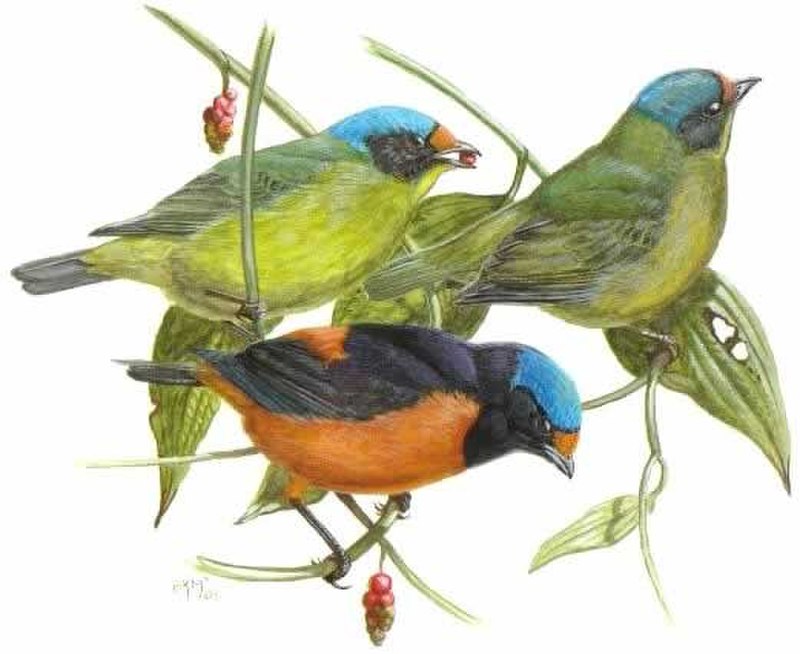
The Antillean euphonia is a colorful and beautiful bird species found across the Lesser Antilles, Hispaniola (Dominican Republic and Haiti) and Puerto Rico.
It belongs to Fringillidae family of finches. This small songbird has strong yellow feathers on its head with blue-green upperparts while they have bright orange breasts and bellies.
Their wings are blackish with white tips, giving them an attractive look when flying in flocks through woodlands or forest edges.
They inhabit subtropical or tropical dry forests as well as moist lowland forests including degraded former ones too.
The populations of this species are declining due to deforestation but still remain common throughout their range if habitats can be preserved for their long term future survival.Scientific classification:
| Kingdom | Animalia |
| Phylum | Chordata |
| Class | Aves |
| Order | Passeriformes |
| Family | Fringillidae |
| Subfamily | Euphoniinae |
| Genus | Chlorophonia |
| Species | C. musica |
Also Featured In: Birds of Haiti, Caribbean Birds
13. Black-Whiskered Vireo
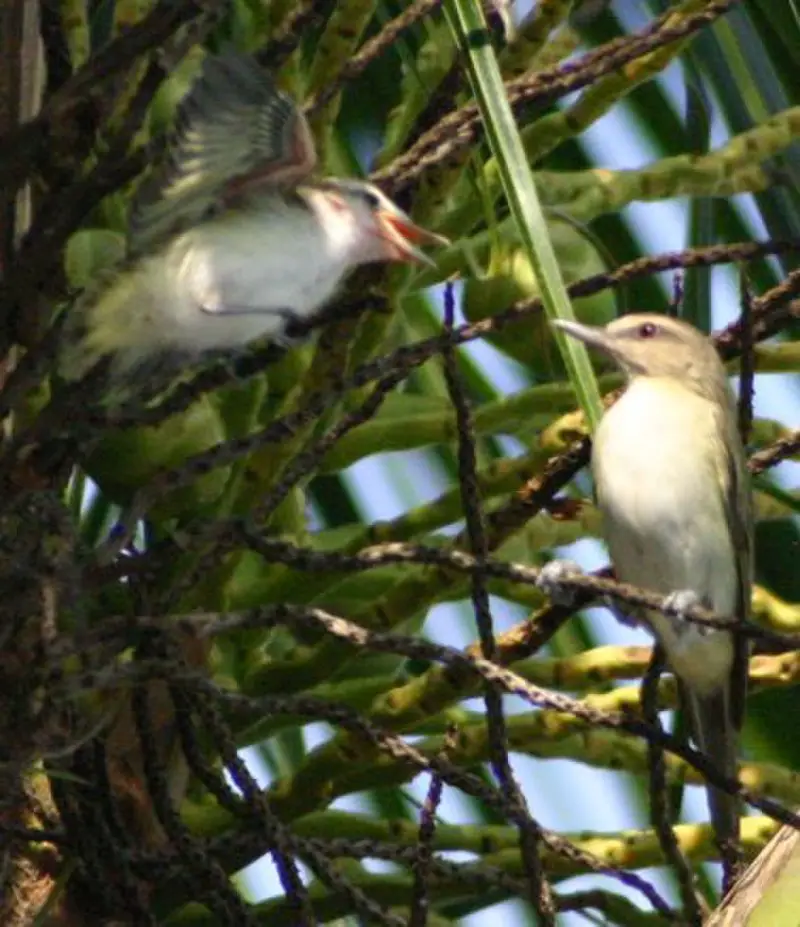
The black-whiskered vireo is a small passerine bird, found in the southern United States, West Indies and northern South America.
It breeds mainly in open deciduous wooded areas but has been known to be an occasional vagrant to Costa Rica.
This species migrates partially north during its winter season from Greater Antilles up towards northern parts of South America.
The male can easily be identified by his distinctive black whiskers on either side of its face while females are generally duller with white streaks along their wings and back.
They make nests at mid tree levels usually out of twigs, grasses or strips of bark which they line with finer materials like feathers or fur for insulation purposes.
All in all these birds are delightful additions to any habitat where they inhabit.Scientific classification:
| Kingdom | Animalia |
| Phylum | Chordata |
| Class | Aves |
| Order | Passeriformes |
| Family | Vireonidae |
| Genus | Vireo |
| Species | V. altiloquus |
Also Featured In: British Virgin Islands Birds You Need to See, Common Birds of Turks and Caicos Islands
14. Bananaquit
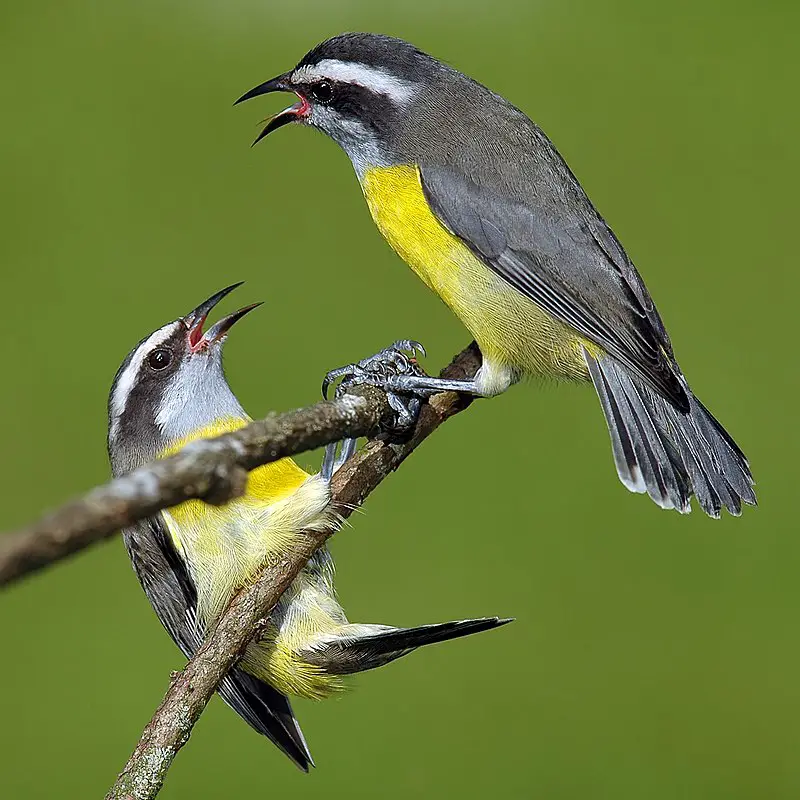
The Bananaquit, scientifically known as Coereba flaveola, is a small passerine bird belonging to the tanager family Thraupidae.
It was previously classified in either its own monotypic family or with other species such as buntings and New World sparrows (Emberizidae) or warblers (Parulidae).
This beautiful little bird has a yellow-green upper body, pale grey head and chestnut brown wings.
Its tail feathers are blackish while its belly is white with some faint streaks of olive green coloration.
The bananaquit can be found across Central America and the Caribbean islands where it feeds on fruits like bananas for which it gets its name from.Scientific classification:
| Kingdom | Animalia |
| Phylum | Chordata |
| Class | Aves |
| Order | Passeriformes |
| Family | Thraupidae |
| Genus | Coereba Vieillot, 1809 |
| Species | C. flaveola |
Also Featured In: Dominican Republic birds, Rainforest Birds You Should Know
15. Bridled Tern
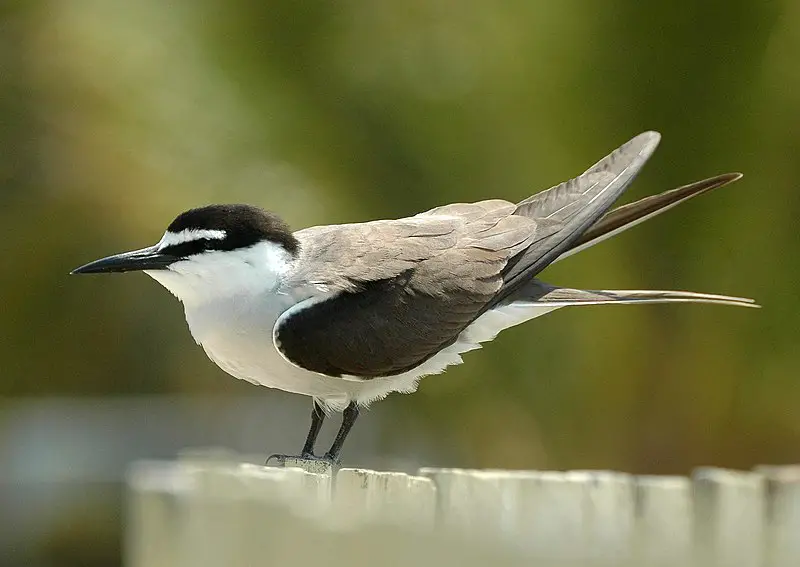
The Bridled Tern is a medium-sized seabird of the family Laridae, found in tropical oceans. It has an impressive wingspan of 77–81 cm and measures 30–32 cm in length – similar to that of the Common Tern.
Its scientific name originates from Ancient Greek; Onux meaning “claw” or “nail”, and Prion, which translates as “saw”. The specific anaethetus means ‘senseless’ or ‘stupid’.
These birds are elegant flyers with greyish brown upperparts and white underparts when they take off into flight, while their head appears black on top but turns to white below the eyes with a thin line between them.Scientific classification:
| Kingdom | Animalia |
| Phylum | Chordata |
| Class | Aves |
| Order | Charadriiformes |
| Family | Laridae |
| Genus | Onychoprion |
| Species | O. anaethetus |
Also Featured In: Oman Birds, Urban Birds of Hong Kong
16. Rufous-Throated Solitaire
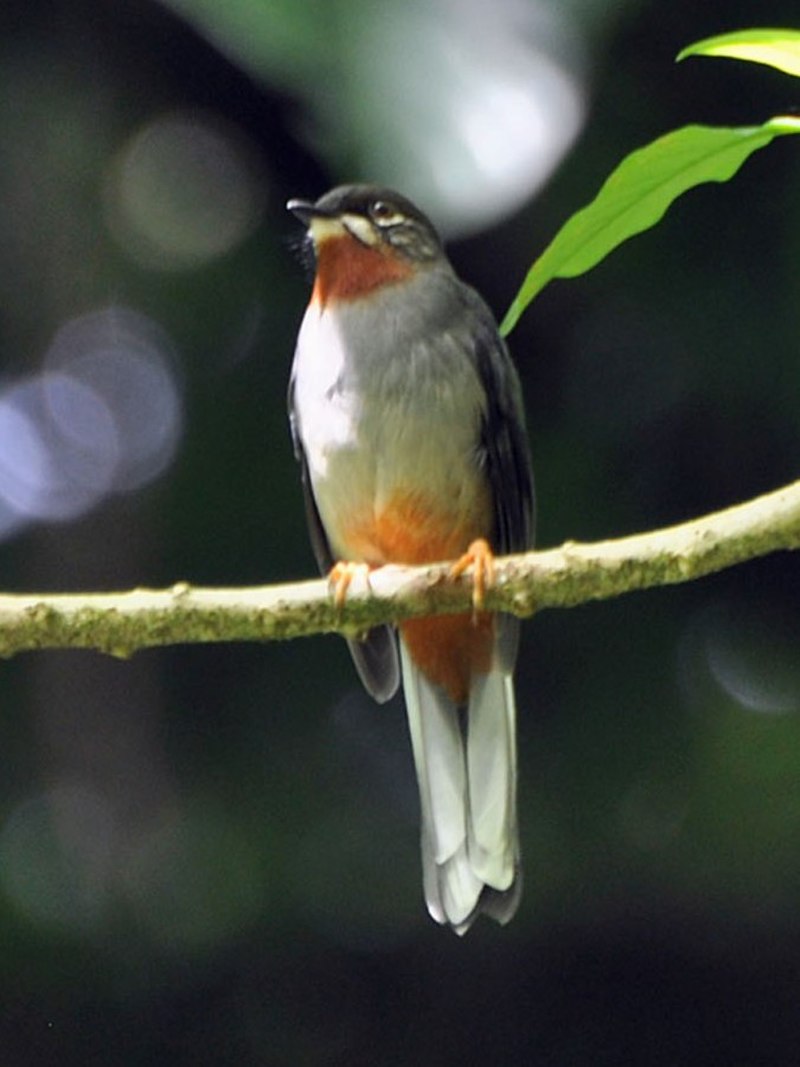
The Rufous-throated Solitaire is a species of bird belonging to the Turdidae family. It can be found in Dominican Republic, Haiti, Jamaica, Martinique and other Caribbean Islands with natural habitats including subtropical or tropical moist lowland forests and montane forests.
This beautiful medium sized songbird has unique characteristics like its greyish brown body colouration combined with an orangey throat that gives it its name; rufous-throated solitaire.
Besides being known by this name they are also nicknamed the ‘siffl’.
Unfortunately due to habitat destruction their population numbers have declined over recent years but conservation efforts are making some progress towards preserving these animals for future generations.Scientific classification:
| Kingdom | Animalia |
| Phylum | Chordata |
| Class | Aves |
| Order | Passeriformes |
| Family | Turdidae |
| Genus | Myadestes |
| Species | M. genibarbis |
Also Featured In: Jamaica birds, Birds That You’ll Find in Hispaniola
17. Spectacled Thrush
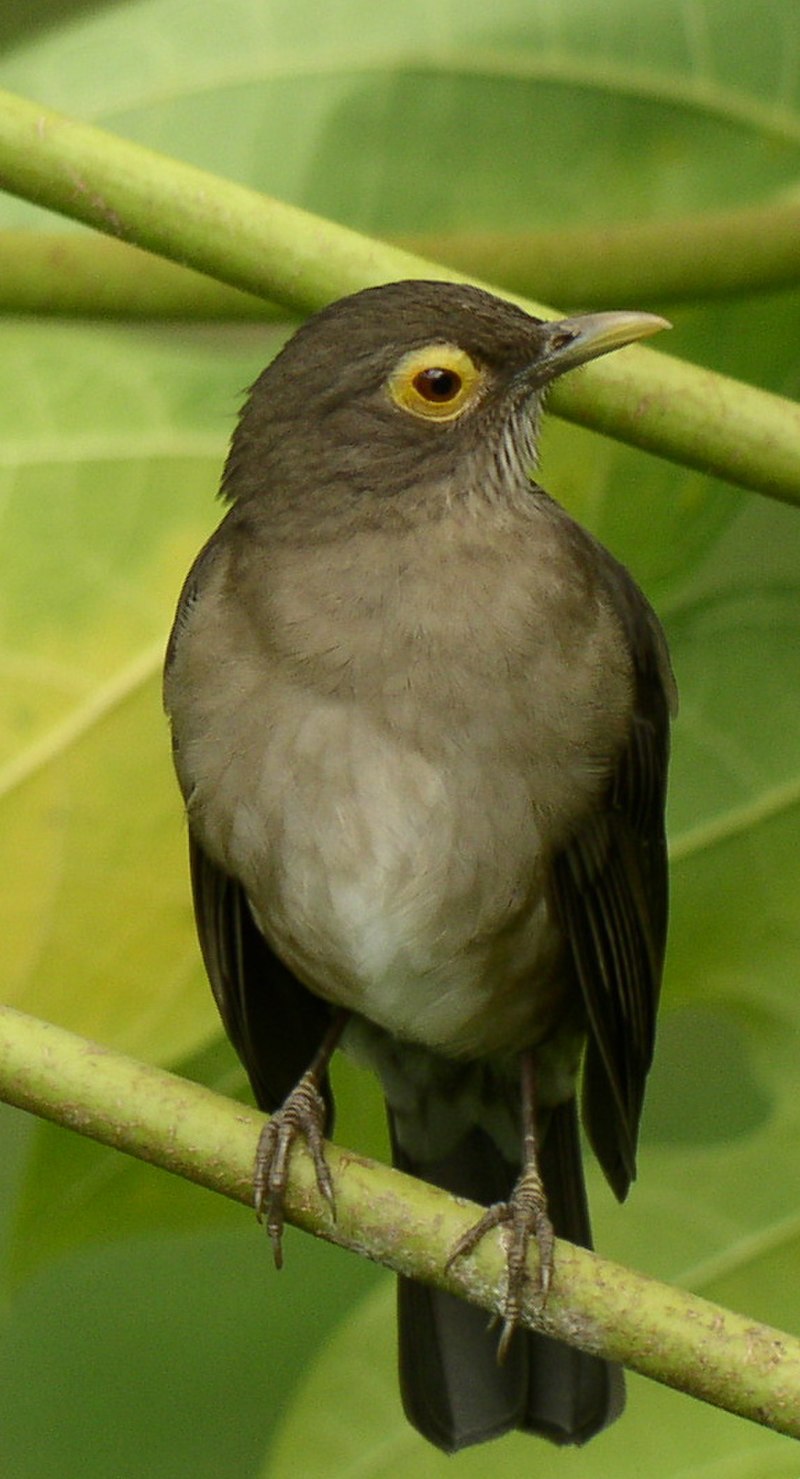
The Spectacled Thrush is a bird that can be found in the Lesser Antilles and South America from Colombia to Brazil. In Trinidad and Tobago, it’s known as Big-eye Grieve.
It was once thought to be related to another species called Ecuadorian thrush but they are now classified separately. The Spectacled Thrush has yellow eyes with white spectacles around them, hence its name.
Its plumage is mainly brownish grey on top while being paler underneath with streaks of black markings across both sides of its body.
This bird typically feeds on fruits and insects, making it an omnivore by nature.
They also love bathing in water pools or streams during hot days which makes for some great sightings if you’re lucky enough.
All in all, the Spectacled Thrush plays an important role in our environment so their conservation should definitely not be overlooked.Scientific classification:
| Kingdom | Animalia |
| Phylum | Chordata |
| Class | Aves |
| Order | Passeriformes |
| Family | Turdidae |
| Genus | Turdus |
| Species | T. nudigenis |
Also Featured In: Trinidad and Tobago birds,
18. White-Tailed Tropicbird
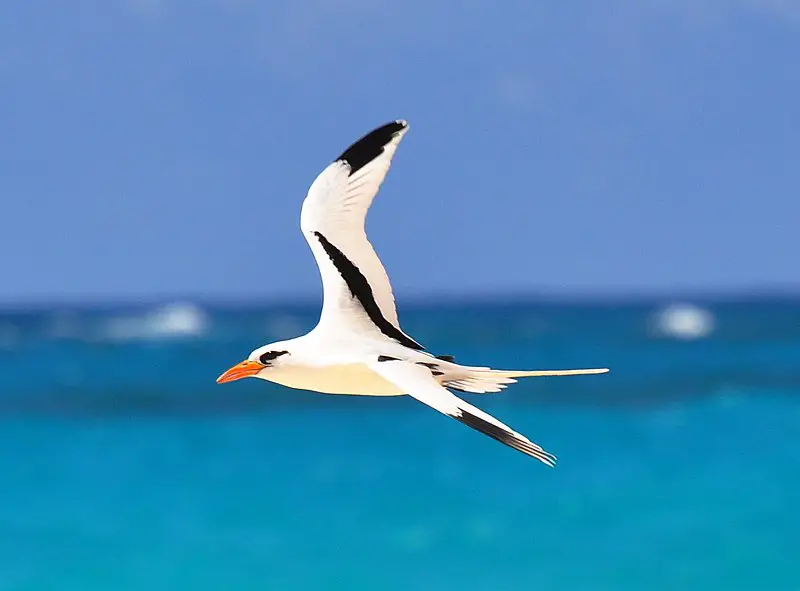
The White-tailed Tropicbird is a beautiful seabird that lives in the tropical waters of the Atlantic, Pacific, and Indian Oceans.
It is the smallest member of its order Phaethontiformes, measuring only 28 inches from head to tail.
Its wingspan can reach up to 45 inches wide. The bird has white plumage with black markings on its wings and tail feathers.
It also has an unmistakable long streamer which trails out behind them when they are in flight – a characteristic feature for all tropicbirds.
They nest mainly on remote islands throughout their range but have recently begun nesting on Little Tobago as well.
These birds feed primarily off flying fish or squid near the ocean’s surface during daylight hours before returning back home at nightfall.Scientific classification:
| Kingdom | Animalia |
| Phylum | Chordata |
| Class | Aves |
| Order | Phaethontiformes |
| Family | Phaethontidae |
| Genus | Phaethon |
| Species | P. lepturus |
Also Featured In: Mauritius birds, Birds of Kauai, Hawaii
19. Masked Booby
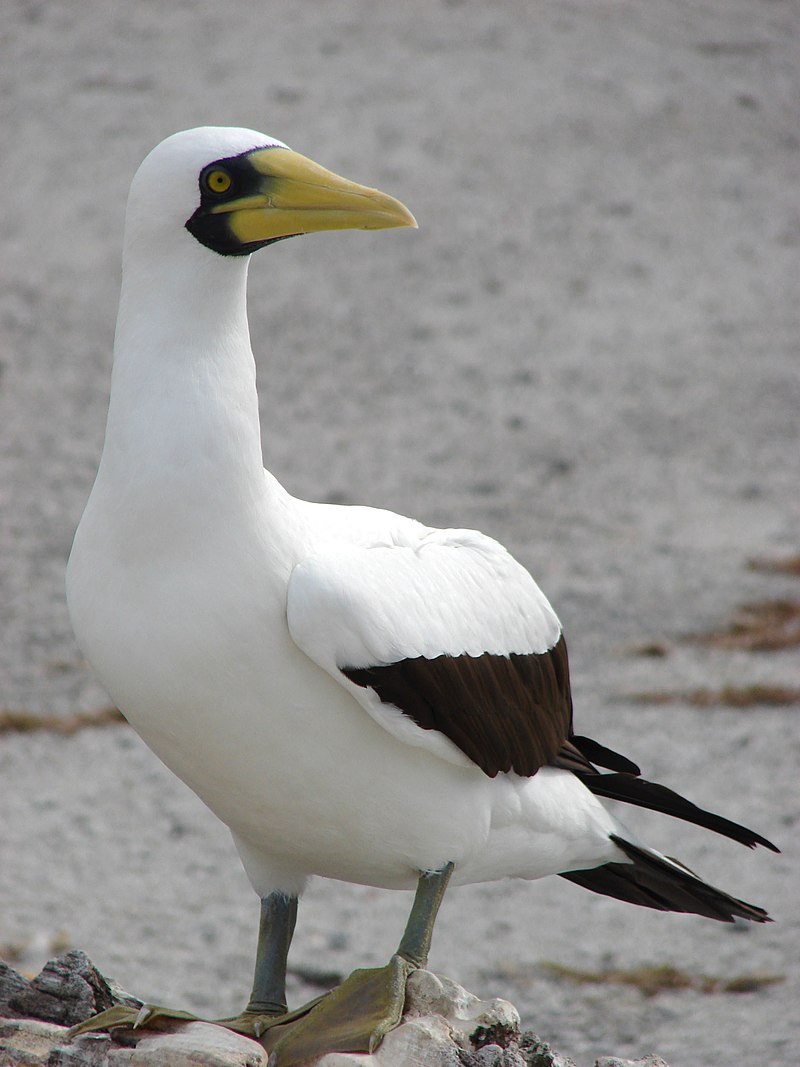
The Masked Booby is a large seabird belonging to the booby and gannet family. It was first described by French naturalist René-Primevère Lesson in 1831, making it one of six species of boobies within its genus Sula.
It has an impressive aerodynamic body shape with pale grey or white plumage on its head and neck, while the rest of its body is blackish brown.
Its wingspan can reach up to 1 metre wide. The bill is yellowish and pointed at the end, whilst they have bright blue skin around their eyes – this is why they are also known as ‘blue-faced’ boobies.
They use their strong wings for soaring over oceans in search of fish which makes them excellent fishers who feed mainly on flying fish near tropical waters but can occasionally be found off coasts in temperate regions too.Scientific classification:
| Kingdom | Animalia |
| Phylum | Chordata |
| Class | Aves |
| Order | Suliformes |
| Family | Sulidae |
| Genus | Sula |
| Species | S. dactylatra |
Also Featured In: Birds that Live in the Ocean , White Birds Commonly Found in Hawaii
20. Brown Noddy
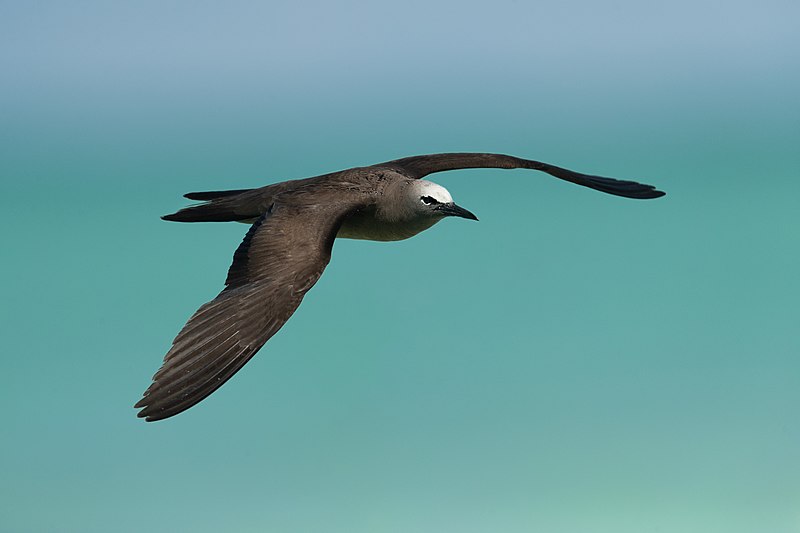
The Brown Noddy is a species of seabird in the Laridae family. It’s the largest of its kind, and can be distinguished from others by its dark brown plumage, which stands out compared to other noddies with black feathers.
Found around tropical oceans worldwide, it inhabits areas such as Hawaii and Australia all the way to Tuamotu Archipelago in Polynesia.
During breeding season they form large colonies on remote islands where their nests are constructed using twigs and leaves situated atop trees or shrubs – typically located near water sources like lagoons or estuaries so they have access to food items like small fish and squid that make up their diet.
As highly social birds they often engage in synchronised flying displays over nesting sites before returning back home at nightfall.Scientific classification:
| Kingdom | Animalia |
| Phylum | Chordata |
| Class | Aves |
| Order | Charadriiformes |
| Family | Laridae |
| Genus | Anous |
| Species | A. stolidus |
Also Featured In: Brown Birds of Florida, Birds That Live around East Island
21. Black-Faced Grassquit
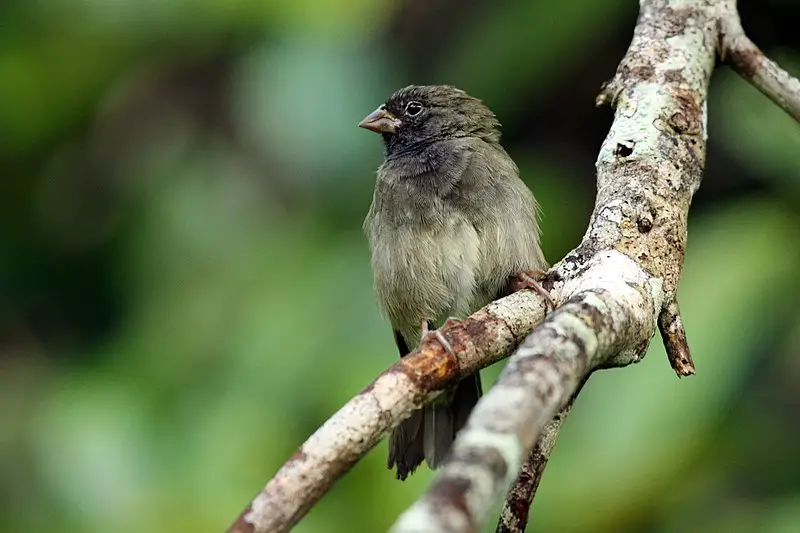
The Black-faced grassquit is a small bird belonging to the tanager family, genetically related to Darwin’s finches. It breeds mainly in the West Indies and along certain parts of Colombia and Venezuela.
The Swedish naturalist Carl Linnaeus first formally described it back in 1766 as part of his twelfth edition work on species classification.
This type of bird has a black head with white spots around its eyes, grey wings and tail feathers; its body is brownish orange or yellow with darker shades towards the belly area.
Its diet consists mostly of seeds from grasses but may also include other insects for additional nutrition during breeding season.Scientific classification:
| Kingdom | Animalia |
| Phylum | Chordata |
| Class | Aves |
| Order | Passeriformes |
| Family | Thraupidae |
| Genus | Melanospiza |
| Species | M. bicolor |
Also Featured In: Bahamas Birds, Common Margarita Island Birds
22. Antillean Nighthawk
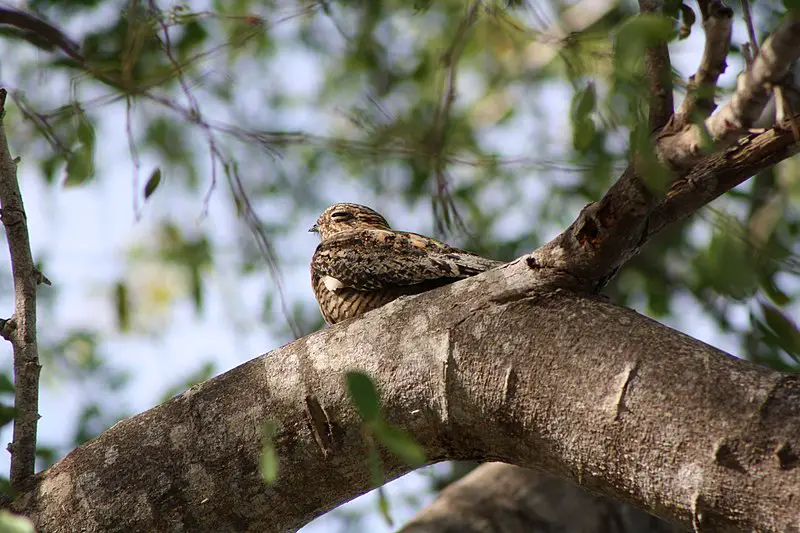
The Antillean nighthawk is an impressive nocturnal bird native to the Caribbean and Florida Keys.
It has a distinct colour scheme of dark brown, grey and white patterning on its upperparts and breast; long wings are black with a white bar visible in flight; tail dark with barring, while underparts are white with blackish-brown streaks.
Named after Cuban naturalist Juan Gundlach, these birds can be found near forest edges or open habitats like savannahs.
They feed primarily by hawking insects at night using their large eyes for good vision in low light conditions.
During breeding season they perform an aerial courtship display involving dives from altitude followed by steep climbs back up again as pairs circle each other doing tight circles around one another – truly spectacular.Scientific classification:
| Kingdom | Animalia |
| Phylum | Chordata |
| Class | Aves |
| Order | Caprimulgiformes |
| Family | Caprimulgidae |
| Genus | Chordeiles |
| Species | C. gundlachii |
Also Featured In: Most Common Birds of Sugarloaf Key,
23. Audubon’s Shearwater
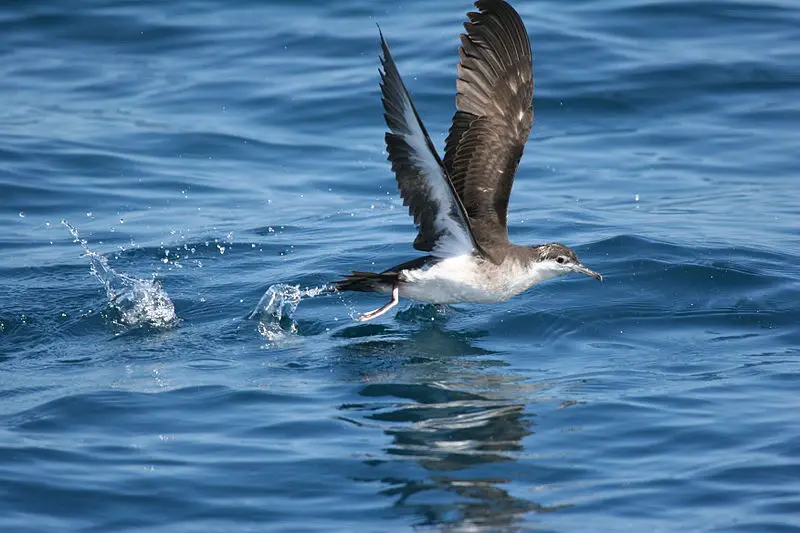
Audubon’s shearwater is a type of seabird belonging to the petrel family. It has many different monikers, including Baillon’s shearwater, tropical shearwater, Bannerman’s shearwater, Mascarene shearwater and Persian Sheawater.
This species was first discovered by French naturalist F�lix Louis L’Herminier in 1836 and earned its scientific name (Puffinus lherminieri) in his honour.
These birds are found throughout tropical oceans across the world from Africa to Asia and even Hawaii.
They have dark brown back feathers with white bellies which help them blend into their environment for protection against predators.
Audubon�s Sheerwaters feed on small fish near ocean surfaces or dive deep underwater when necessary due to their strong wings allowing them excellent swimming capabilities through powerful winds at sea level as well as incredible endurance during long distance flights over vast areas of open water around islands or coastlines.Scientific classification:
| Kingdom | Animalia |
| Phylum | Chordata |
| Class | Aves |
| Order | Procellariiformes |
| Family | Procellariidae |
| Genus | Puffinus |
| Species | P. lherminieri |
24. Pearly-Eyed Thrasher
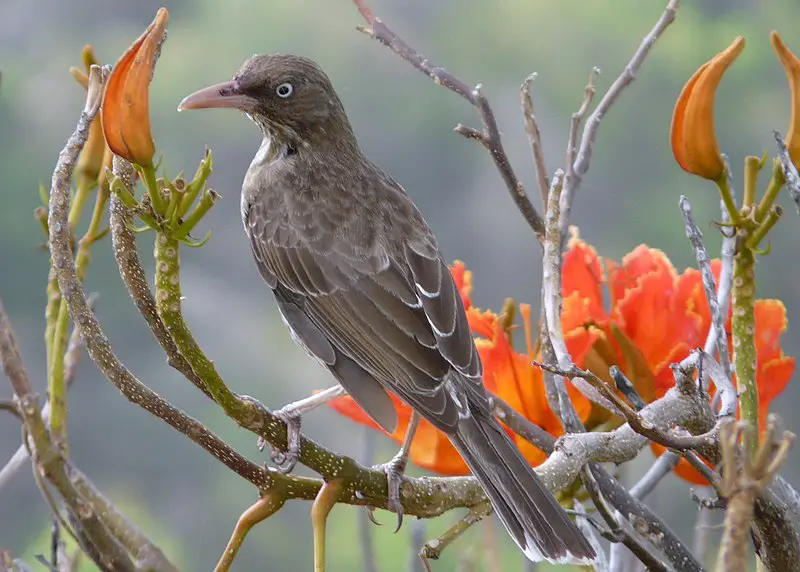
The Pearly-eyed Thrush is a unique and beautiful bird native to the Caribbean islands. It has stunning pearly eyes, with white patches on its wings and tail.
This thrasher measures up to 28-30 cm in length, making it the largest species of Mimidae family found in this area.
With an isolated subspecies living on Bonaire island, these birds have adapted well to their environment over time.
They feed mainly on insects found around them, but will also eat fruits or berries when available for extra nourishment.
These birds are often seen singing together as part of group displays at dawn or dusk – one more reason why they are so special.Scientific classification:
| Kingdom | Animalia |
| Phylum | Chordata |
| Class | Aves |
| Order | Passeriformes |
| Family | Mimidae |
| Genus | Margarops P.L. Sclater, 1859 |
| Species | M. fuscatus |
Also Featured In: Native Birds Of Guadeloupe Island,
25. Scaly-Naped Pigeon
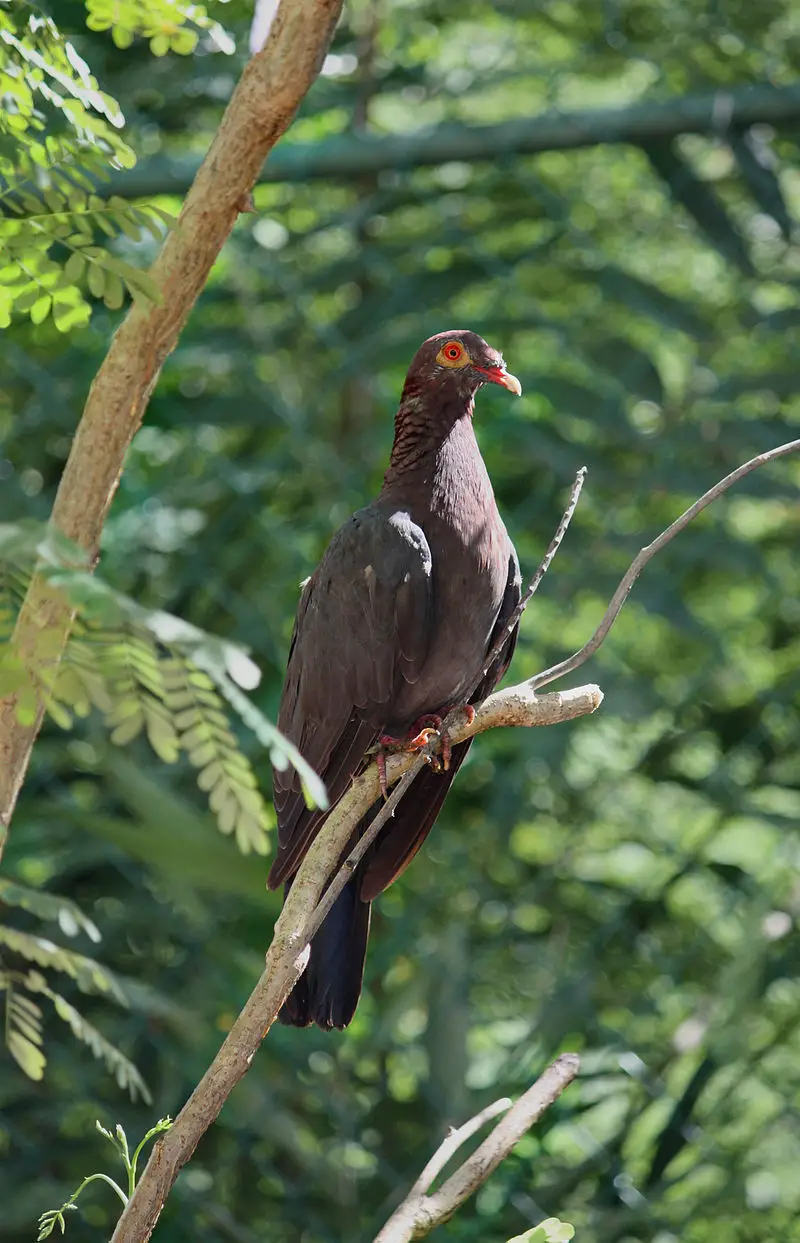
The scaly-naped pigeon is a large bird belonging to the family Columbidae. It has slate grey plumage with maroon coloured feathers around its neck, giving it the common name of red-necked pigeon.
The species originates from throughout the Caribbean and can reach 14–16 inches in length.
Its scientific name is derived from its unique feature: small scales on its nape which form an attractive pattern when viewed up close.
This makes them easily distinguishable from other birds within their range as they are one of few that have this characteristic.
They feed mainly on fruit but also consume seeds, insects and even carrion depending on availability at any given time of year or location.Scientific classification:
| Kingdom | Animalia |
| Phylum | Chordata |
| Class | Aves |
| Order | Columbiformes |
| Family | Columbidae |
| Genus | Patagioenas |
| Species | P. squamosa |
Also Featured In: Native Birds Of Middle Caicos, Common Birds of St. Vincent Island
26. Green-Throated Carib
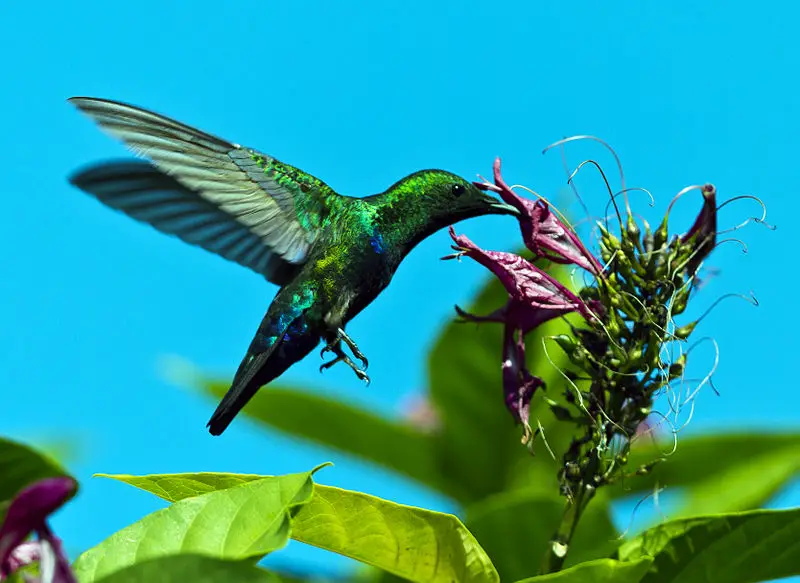
The Green-throated Carib is a species of hummingbird found in Puerto Rico and most of the Lesser Antilles. It was described by Swedish naturalist Carl Linnaeus in 1758.
The bird has distinctive green throat feathers, with iridescent blue on its back and wings. Its tail feathers are blackish brown at the base and white towards the tip, forming two distinct bands across their length.
This beautiful creature usually feeds on nectar from flowers or small insects such as spiders, bees and ants that it catches while flying through foliage.
Despite being fairly common throughout its range, this delightful little bird faces some threats due to habitat loss caused by human activity like agriculture or development projects taking place in areas where they live naturally.Scientific classification:
| Kingdom | Animalia |
| Phylum | Chordata |
| Class | Aves |
| Order | Apodiformes |
| Family | Trochilidae |
| Genus | Eulampis |
| Species | E. holosericeus |
Also Featured In: Barbados Birds,
27. Gray Kingbird
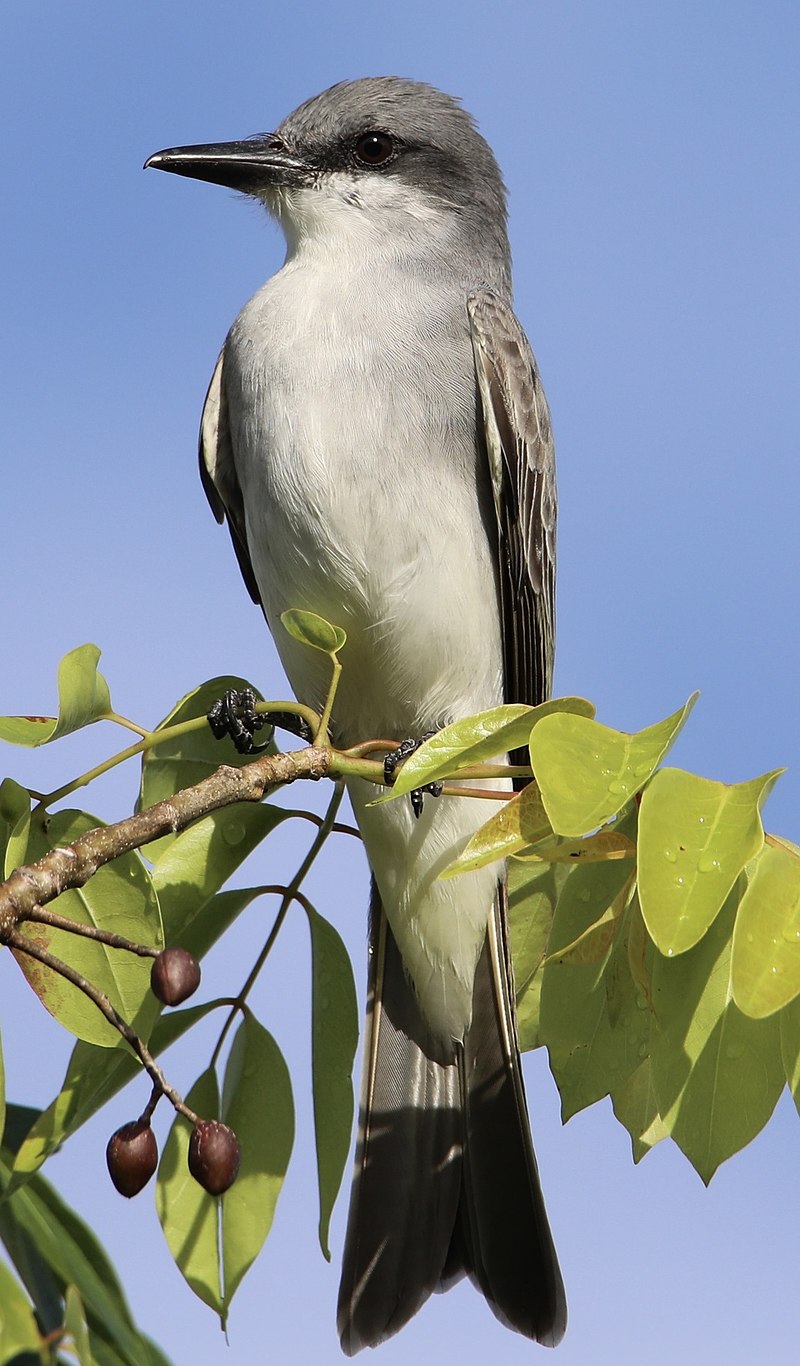
The Gray Kingbird is a species of tyrant flycatcher found in tall trees and shrubs, including the edges of savannas and marshes. It has gray feathers on its back with white underparts and blackish wings.
Its head is dark gray-brown or olive, while its tail is tipped with white. The Gray Kingbird builds flimsy cup nests from twigs in tree branches for their eggs to incubate safely until they hatch into chicks.
They feed mainly on insects such as moths, grasshoppers, beetles, crickets and caterpillars that can be caught midair when it swoops down from above like other kingbirds do.
This bird’s call consists of loud chirps which are often heard during mating season – making them an easily identifiable species within areas where they live.Scientific classification:
| Kingdom | Animalia |
| Phylum | Chordata |
| Class | Aves |
| Order | Passeriformes |
| Family | Tyrannidae |
| Genus | Tyrannus |
| Species | T. dominicensis |
Also Featured In: Birds That Live In Boca Grande, Most Common Birds of Caladesi Island
28. Carib Grackle
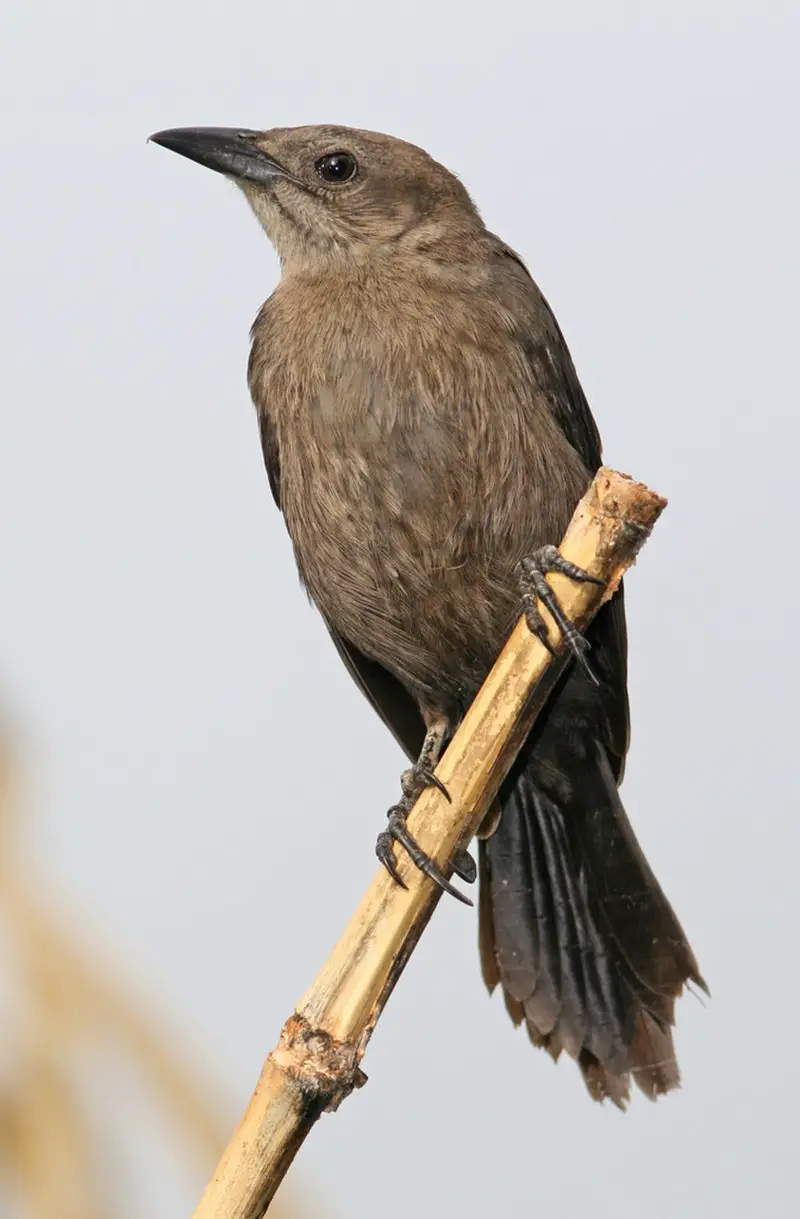
The Carib grackle is a tropical blackbird found in the Lesser Antilles and northern South America. It has eight subspecies, with the most widespread being Q. l. lugubris which can be found on Trinidad and much of mainland South America.
This particular subspecies was introduced to Puerto Rico during the 19th century where it now thrives due to its adaptability and tolerance towards human activity such as living near grazing animals or around farms.
Its diet consists mainly of small invertebrates, fruits, seeds and grains – all readily available in populated areas making it ideal for urban environments too.
They are also known for their beautiful songs used by males during breeding season to attract females but unfortunately this doesn’t last long as they generally only mate once throughout life before moving onto find another partner shortly after nesting season ends.Scientific classification:
| Kingdom | Animalia |
| Phylum | Chordata |
| Class | Aves |
| Order | Passeriformes |
| Family | Icteridae |
| Genus | Quiscalus |
| Species | Q. lugubris |
29. Zenaida Dove
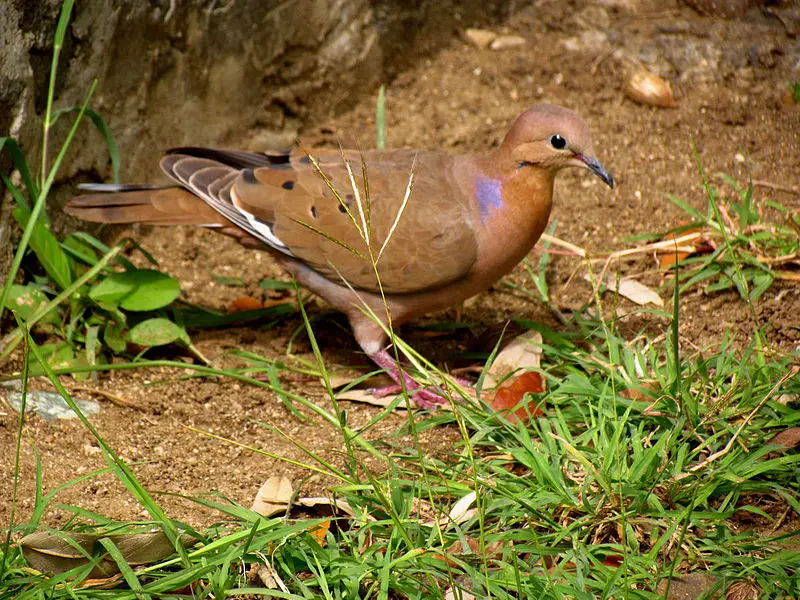
The Zenaida dove is a species of doves and pigeons found mainly in the Caribbean, but also parts of Mexico, Central America and South America.
With its distinct dark coloring, short rounded tail and an average length of 28-30 cm (11-12 inches), it stands out from other bird families.
It’s recognized as the national bird for Anguilla where locals refer to it as ‘turtle dove’. They are seen flying around open grasslands or roosting on tree branches close by populated areas.
These birds feed mostly on seeds that they pick off the ground while walking through fields.
The Zenaida Dove breeds all year round producing two broods during spring and summer months with both male and female taking turns incubating eggs over a span of 14 days before hatching into chicks.Scientific classification:
| Kingdom | Animalia |
| Phylum | Chordata |
| Class | Aves |
| Order | Columbiformes |
| Family | Columbidae |
| Genus | Zenaida |
| Species | Z. aurita |
Also Featured In: Common Birds Found near Necker Island,
30. Grassland Yellow Finch
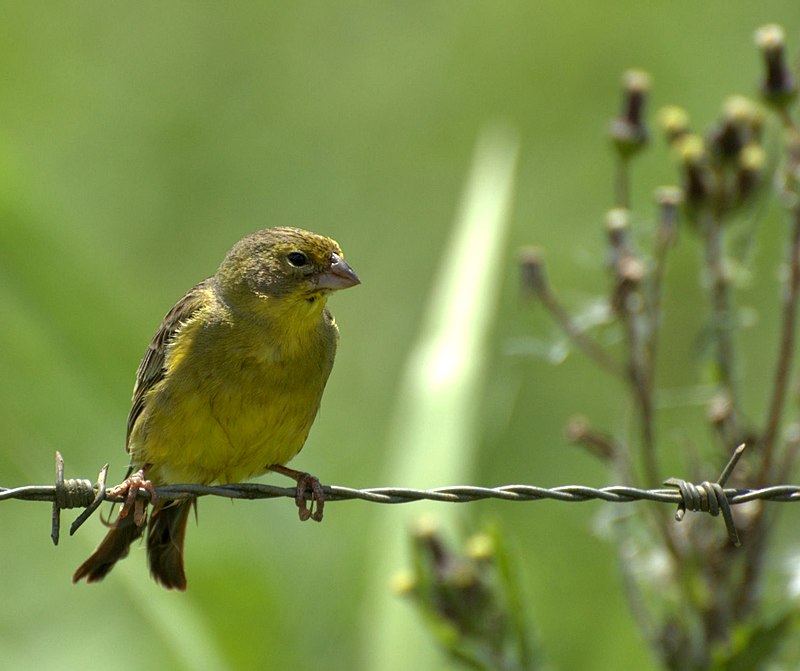
The Grassland yellow finch is a small passerine bird that belongs to the tanager family, despite its name.
It can be found in tropical South America from Colombia south and eastwards including parts of central Ecuador, Peru and Brazil.
This species typically resides year round though some birds have been known to migrate further north during winter months.
These birds feed mainly on seeds which they forage from grasses while also consuming insects such as beetles or flies when available.
The plumage of this beautiful bird consists of shades ranging from olive-green to yellow with black streaks running along its wings and tail feathers; males may possess brighter colors than females depending on the season.
Overall these stunning little creatures make wonderful additions to any aviary setting.Scientific classification:
| Kingdom | Animalia |
| Phylum | Chordata |
| Class | Aves |
| Order | Passeriformes |
| Family | Thraupidae |
| Genus | Sicalis |
| Species | S. luteola |
31. Collared Plover
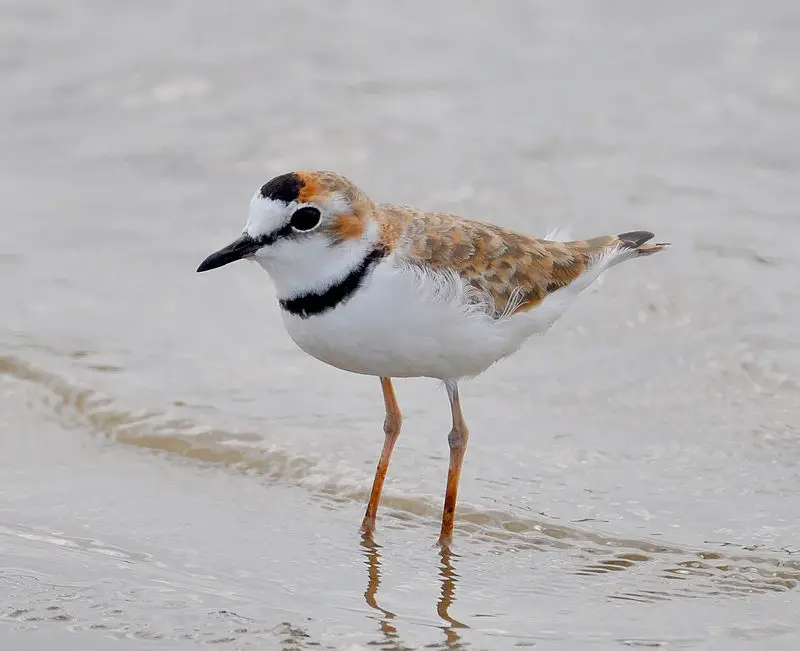
The Collared Plover is a small shorebird found along coasts and riverbanks of the tropical to temperate Americas, from central Mexico down to Chile and Argentina.
This plover measures 18 cm in length with an average weight of 35g; it has brown upperparts contrasting with white underparts all year round.
The adult plumage shows a black breast patch that can be seen clearly when they fly away or take off.
Although their population is decreasing due to habitat destruction, these birds have adapted well by learning how to live near human settlements where food sources are more plentiful.
They feed on insects, larvae, worms and other invertebrates while searching for them among mudflats, beaches or riversides.Scientific classification:
| Kingdom | Animalia |
| Phylum | Chordata |
| Class | Aves |
| Order | Charadriiformes |
| Family | Charadriidae |
| Genus | Charadrius |
| Species | C. collaris |
Also Featured In: Common Birds of Guerrero, Most Common Oaxaca Birds
32. Caribbean Elaenia
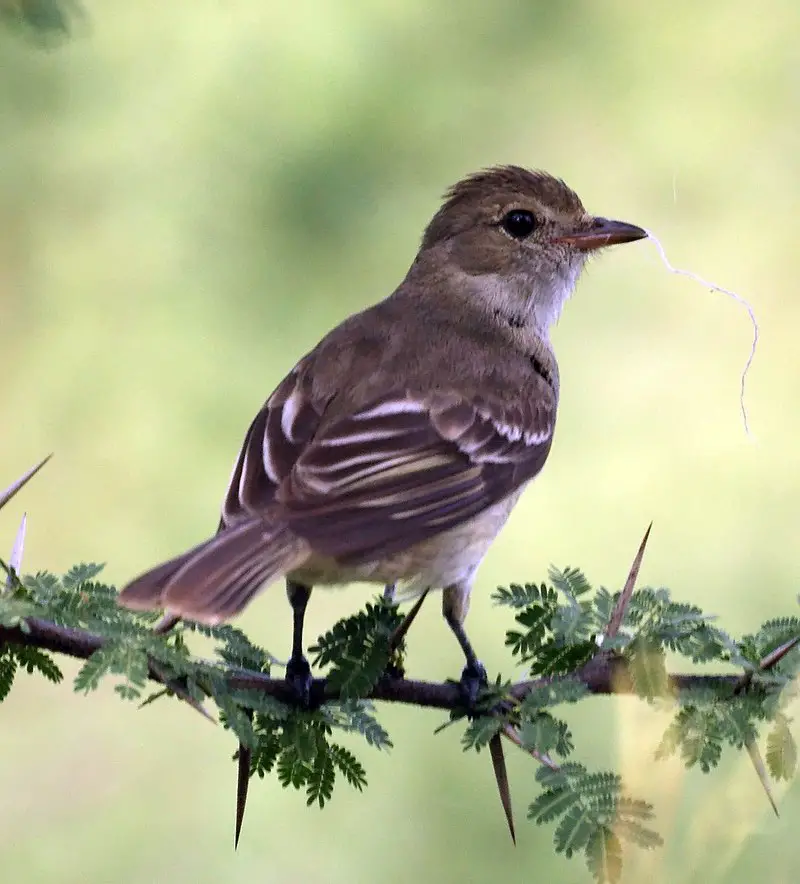
The Caribbean elaenia is a species of small bird that can be found in the West Indies and parts of Central America.
It is part of the Tyrannidae family and inhabits tropical dry broadleaf forests, subtropical or tropical moist lowland forests, as well as heavily degraded former forest areas.
In 1760, French zoologist Mathurin Jacques Brisson provided an extensive description on this species which has helped us gain further knowledge about it today.
The Caribbean elaenia typically measures around 6-9 inches long with predominantly olive green feathers with yellowish edges to some wings and tails.
They have white throats but lack any distinctive markings on their chest unlike many other birds from its family.
This bird feeds primarily on insects such as grasshoppers collected from trees or bushes while also consuming fruit when available during certain times of year.Scientific classification:
| Kingdom | Animalia |
| Phylum | Chordata |
| Class | Aves |
| Order | Passeriformes |
| Family | Tyrannidae |
| Genus | Elaenia |
| Species | E. martinica |
Also Featured In: Beautiful Birds Found in Grand Cayman,
33. Common Ground Dove
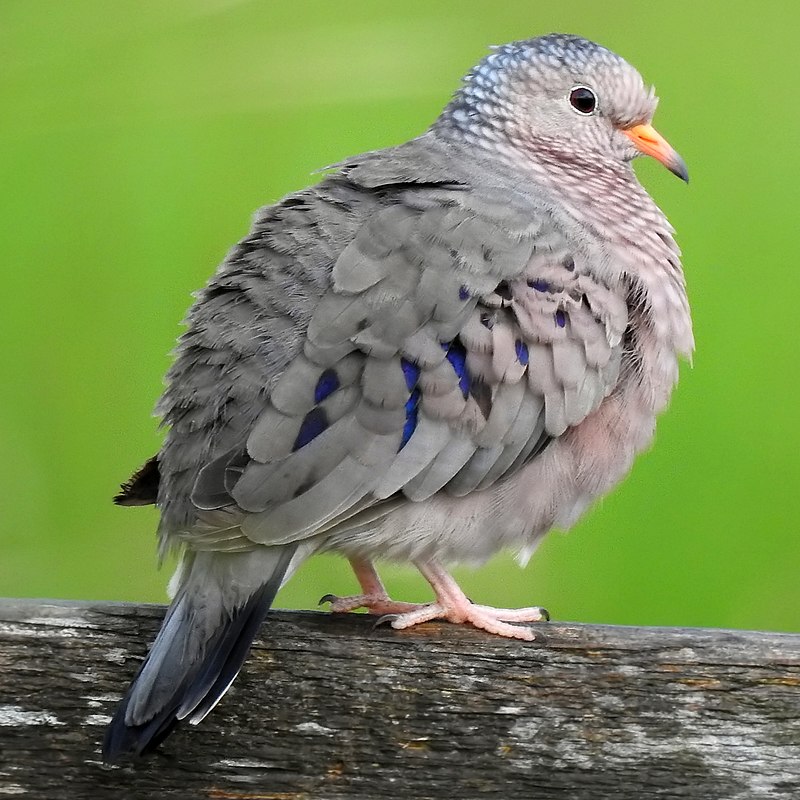
The Common Ground Dove is a small bird that can be found in the southern United States, Central America, the Caribbean and northern South America.
It’s considered to be one of the smallest dove species in North American with an average length of around 6–7 inches.
This ground-dwelling species spends most of its time on foot but has been known to fly when necessary or threatened.
The plumage is pale grayish brown above while their bellies are white and speckled with black spots along their wings.
Its diet consists mainly of seeds from grasses and other low vegetation which it forages for by walking slowly across open fields or lawns looking for food items like berries, grains, insects, spiders and snails.Scientific classification:
| Kingdom | Animalia |
| Phylum | Chordata |
| Class | Aves |
| Order | Columbiformes |
| Family | Columbidae |
| Genus | Columbina |
| Species | C. passerina |
Also Featured In: Birds You’ll Find in South Texas , Birds You’ll Find in the Rio Grande Valley
34. Grey Trembler
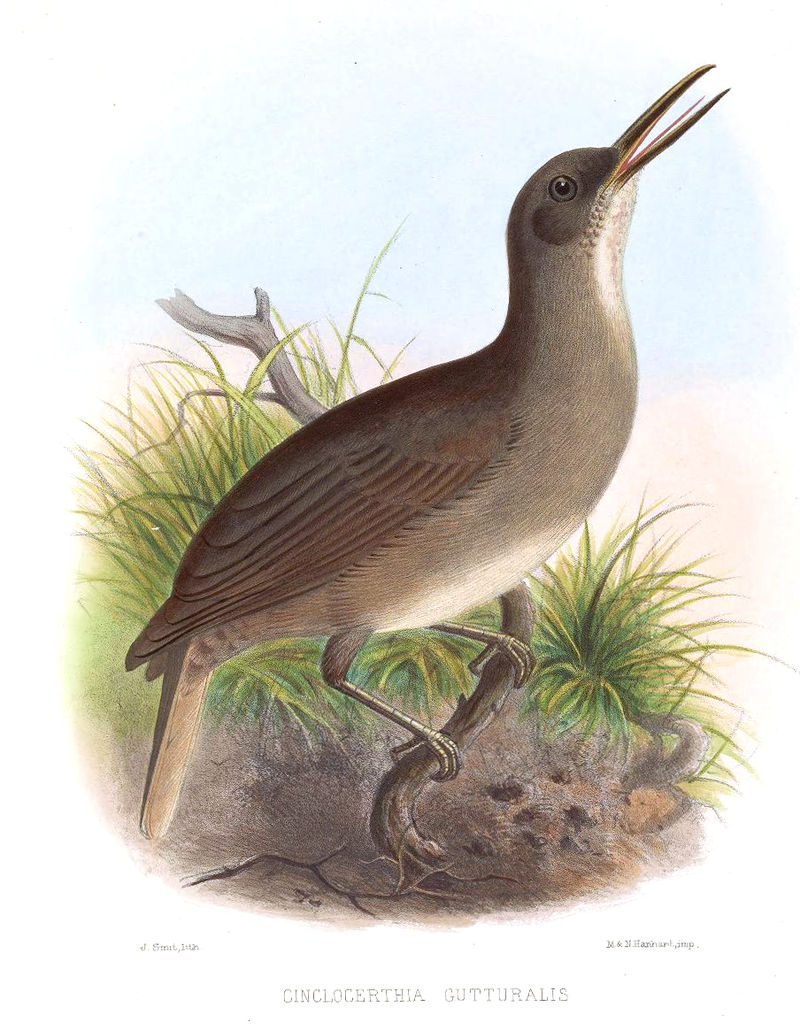
The Grey Trembler is a beautiful songbird found only in the Lesser Antilles of the Caribbean Sea. This species belongs to the Mimidae family, which includes mockingbirds and thrashers.
It has two subspecies – Cinclocerthia gutturalis gutturalis and Cinclocerthia gutturalis sanctaeluciae – both endemic to Martinique and Saint Lucia respectively.
The Grey Trembler was previously thought to be an amalgamation of Brown Tremblers from these islands until it was established as its own distinct species in 2002.
These birds are greyish-brown with white scaly markings on their wings, back and tail feathers; they also have distinctive yellow eyes.
They live mainly in humid forested habitats but can be seen foraging near suburban gardens too. With its melodious singing voice, this bird is sure to bring joy wherever it goes.Scientific classification:
| Kingdom | Animalia |
| Phylum | Chordata |
| Class | Aves |
| Order | Passeriformes |
| Family | Mimidae |
| Genus | Cinclocerthia |
| Species | C. gutturalis |
Also Featured In: Saint Lucia Birds,
35. Lesser Antillean Bullfinch
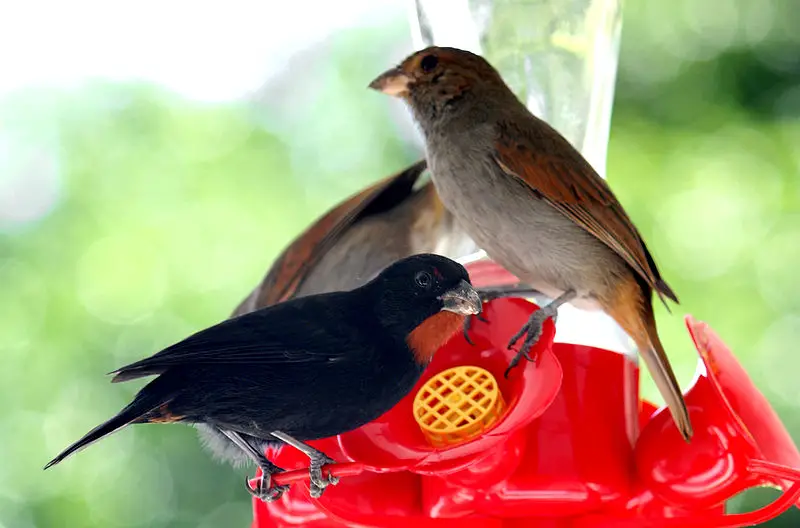
The Lesser Antillean Bullfinch is a species of bird found throughout the Caribbean islands. It has greenish-brown feathers, white cheeks and wings with black spots, and red-orange legs.
Its natural habitats include forests, mangroves and shrublands. This small finch feeds mainly on fruits but also eats insects such as caterpillars and moths in addition to nectar from flowers.
They are often seen foraging near flowering trees during the breeding season when they build nests made out of grasses or plant fibers lined with soft downy feathers for their young ones to rest in comfortably.
These birds have adapted well to human presence so can be easily spotted around gardens within cities where they come looking for food scraps left by people.Scientific classification:
| Kingdom | Animalia |
| Phylum | Chordata |
| Class | Aves |
| Order | Passeriformes |
| Family | Thraupidae |
| Genus | Loxigilla |
| Species | L. noctis |
36. Lesser Antillean Pewee
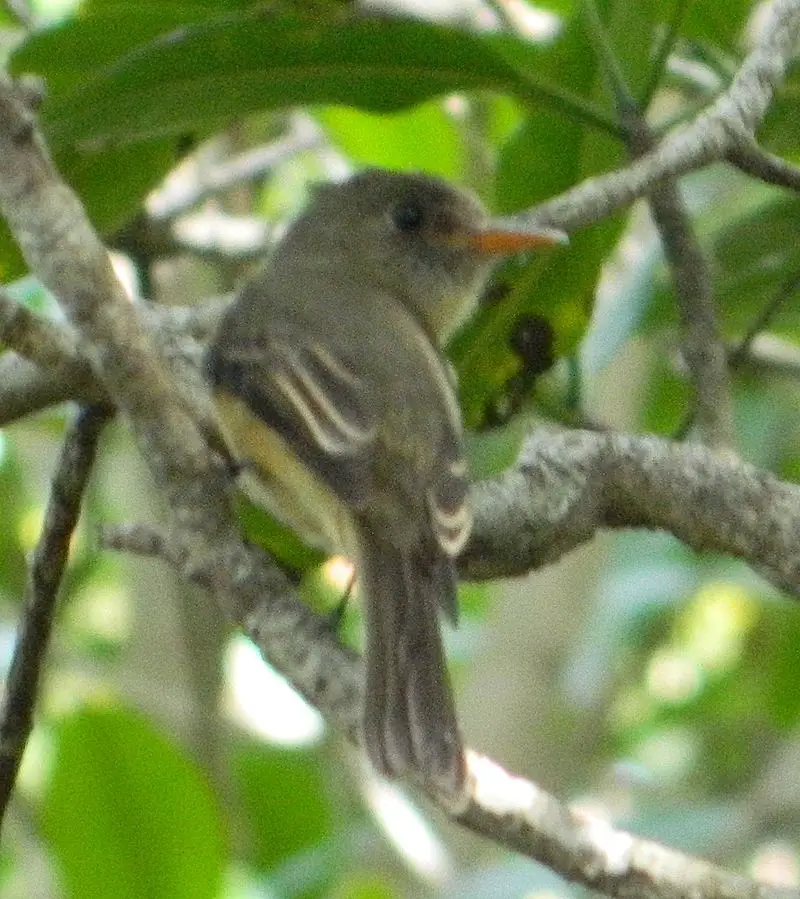
The Lesser Antillean pewee is a species of bird found in the family Tyrannidae. It can be spotted in Dominica, Guadeloupe, Martinique, Puerto Rico and Saint Lucia with records from Saint Kitts.
In fact some experts suggest that birds on Puerto Rico are different enough to be considered their own species (Puerto Rican pewee) while those living on St Lucia are also distinct enough to have been named ‘St Lucian Pewees’.
This small songbird prefers habitats like tropical or subtropical moist lowland forests as well as heavily degraded former forest areas.
With its drab grayish-brown plumage it’s rather unassuming but during breeding season males will give a distinctive “churrr” call which makes them easier to spot.Scientific classification:
| Kingdom | Animalia |
| Phylum | Chordata |
| Class | Aves |
| Order | Passeriformes |
| Family | Tyrannidae |
| Genus | Contopus |
| Species | C. latirostris |
37. Purple-Throated Carib
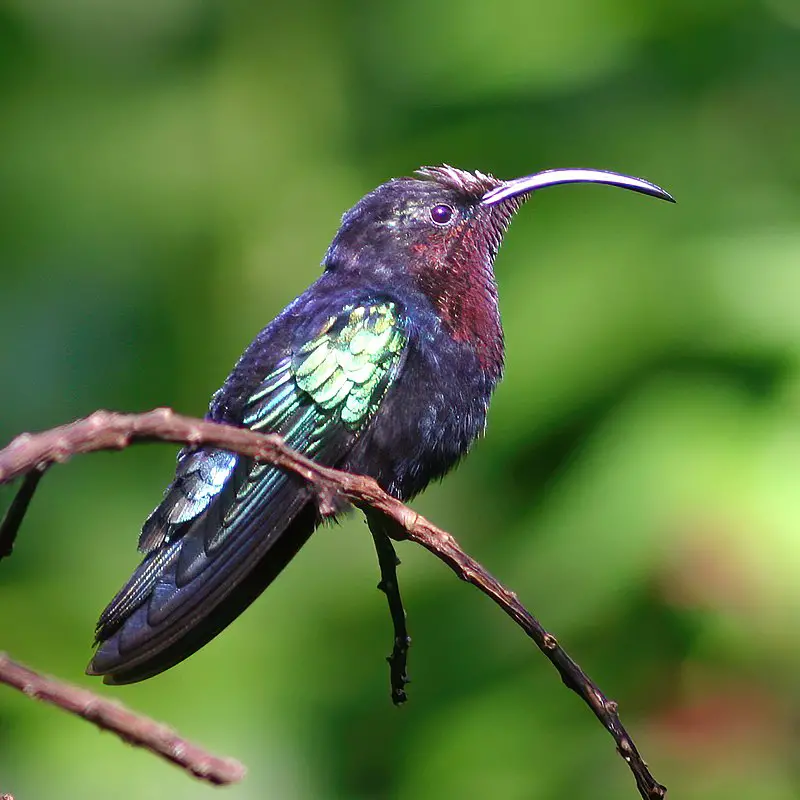
The Purple-throated Carib is a species of hummingbird found in the Lesser Antilles islands. It has stunning purple feathers along its throat, making it quite easy to identify amongst other birds.
This bird is usually seen alone or in pairs and can be found near forests and gardens where they feed on nectar from flowers.
The Purple-throated Carib also feeds on insects which helps keep insect populations under control around their habitat areas.
They are known as strong fliers that have been spotted both north and south of the Caribbean Islands showing just how far this resilient species can travel.
Overall, this vibrant little bird adds beautiful colour to any garden with its mesmerising plumage while providing an essential service at controlling bug numbers too.Scientific classification:
| Kingdom | Animalia |
| Phylum | Chordata |
| Class | Aves |
| Order | Apodiformes |
| Family | Trochilidae |
| Genus | Eulampis |
| Species | E. jugularis |
38. Lesser Antillean Saltator
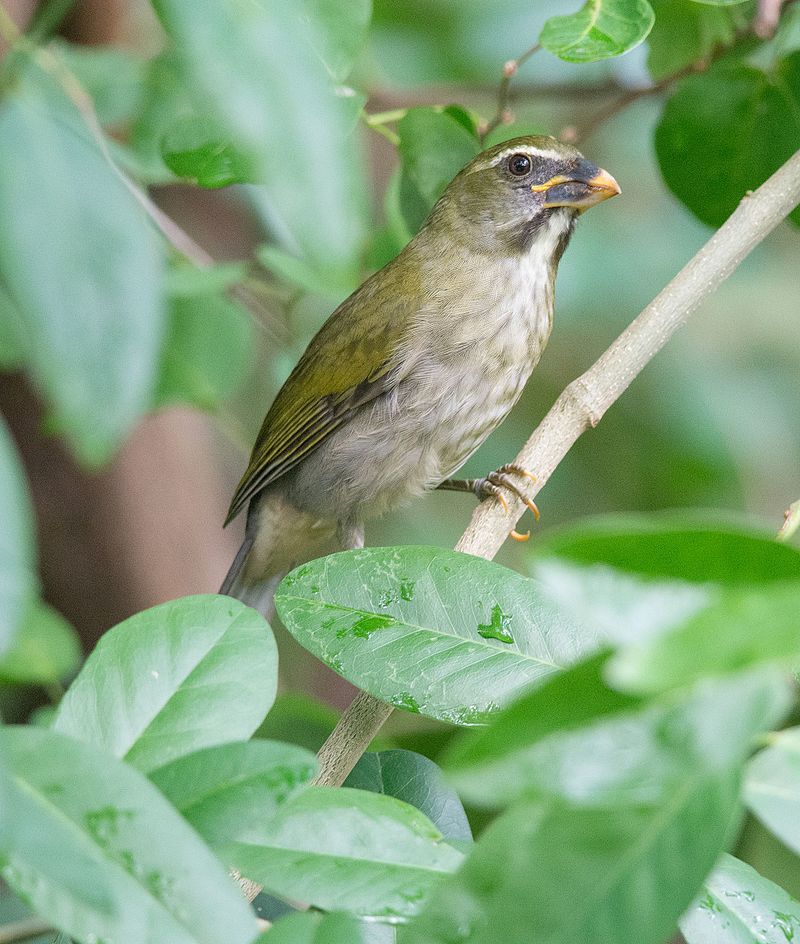
The Lesser Antillean saltator is a species of songbird found in Dominica, Martinique, Saint Kitts and Nevis, and Saint Lucia.
They live mainly in subtropical or tropical dry forests but can also be seen in heavily degraded former forest areas.
These birds have brown upperparts with blackish wings; their underparts are white to pale grey. They possess a thick bill which curves slightly downward at the tip.
Their diet consists mostly of insects such as beetles, flies and grasshoppers along with berries from trees like Miconia robinsoniana and Eugenia spicata that they forage for on the ground or lower branches within the canopy layer of these habitats.
The Lesser Antillean saltator plays an important role in controlling insect populations near its range making it crucial to maintain healthy ecosystems within this region.Scientific classification:
| Kingdom | Animalia |
| Phylum | Chordata |
| Class | Aves |
| Order | Passeriformes |
| Family | Thraupidae |
| Genus | Saltator |
| Species | S. albicollis |
39. Lesser Antillean Flycatcher
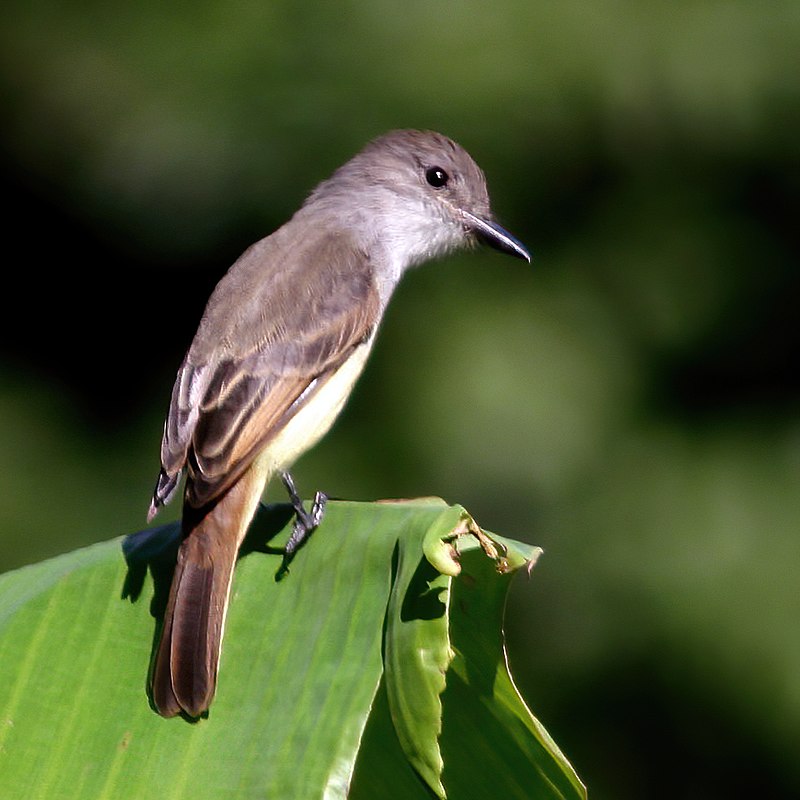
The Lesser Antillean flycatcher is a species of bird found in the Caribbean region. It belongs to the family Tyrannidae and inhabits subtropical or tropical moist lowland forests.
This small songbird has long wings, rounded heads, and short bills with distinct dark markings on its upperparts. Its diet consists mostly of insects which it catches by flying around branches and foliage looking for prey.
The Lesser Antillean flycatcher also builds its nest near tree trunks using twigs, leaves, feathers, grasses and bark strips as materials for construction.
Despite being widely distributed across several islands in the Caribbean Sea this species is considered vulnerable due largely to habitat destruction caused by human activities such as logging and urbanization throughout their range area.Scientific classification:
| Kingdom | Animalia |
| Phylum | Chordata |
| Class | Aves |
| Order | Passeriformes |
| Family | Tyrannidae |
| Genus | Myiarchus |
| Species | M. oberi |
40. Bridled Quail-Dove
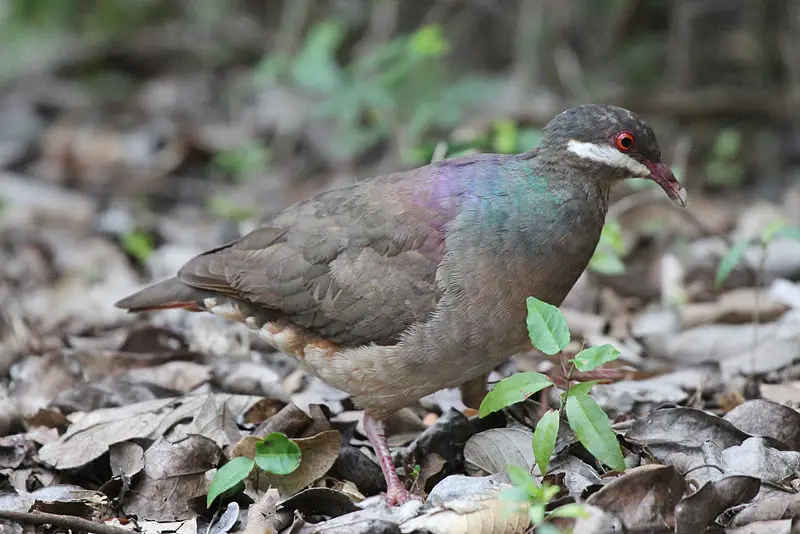
The Bridled Quail-Dove is a species of bird in the Columbidae family, found from Saint Lucia to Puerto Rico. It is monotypic, and it has been suggested that it forms a superspecies with Key West Quail-Doves.
Its mean weight varies between islands; generally being quite small at 93–128 g (3.3–4.5 oz).
They have distinctly barred heads and greyish white underparts with some dark barring on their backs, wings and tails – giving them an overall ‘bridled’ look for which they are named after.
In addition to this striking appearance they make deep cooing sounds whilst perched or hunting for food on the ground – particularly during breeding season when males compete against each other by singing different variations of their call simultaneously.Scientific classification:
| Kingdom | Animalia |
| Phylum | Chordata |
| Class | Aves |
| Order | Columbiformes |
| Family | Columbidae |
| Genus | Geotrygon |
| Species | G. mystacea |
41. Scaly-Breasted Thrasher
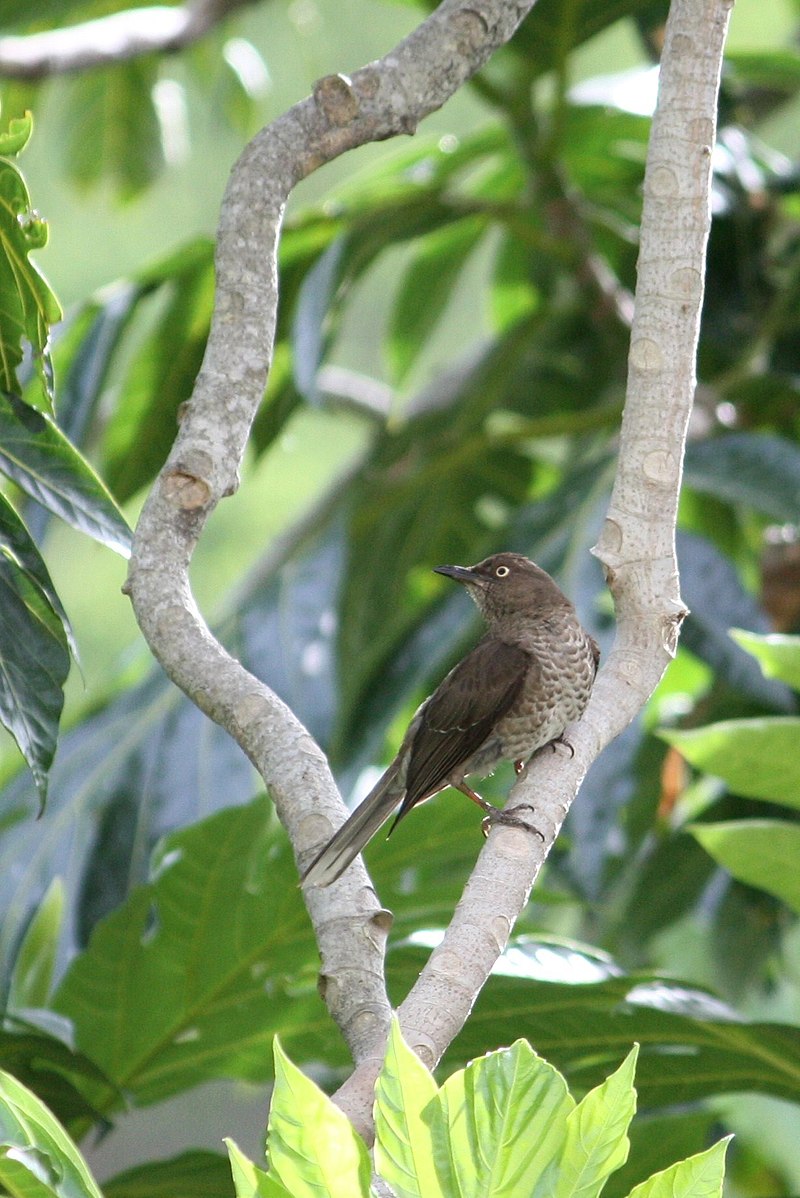
The Scaly-breasted Thrasher is a species of bird in the family Mimidae, found throughout much of the Lesser Antilles.
It has five subspecies and is approximately 23 cm long with greyish brown upperparts and black wings marked with white spots.
Its underparts are reddish orange to yellow buff, finely scaled or scalloped with darker edges, giving it its name.
This thrasher feeds mainly on insects but also eats fruits and berries as well as small lizards.
The male performs elaborate courtship displays which include soaring flights high into the air followed by singing from perches at the tops of trees or shrubs during breeding season between February – May period each year .
It typically nests low down in thickets near water sources such as rivers or streams using twigs bound together with spider web silk for nesting material , laying 2 to 3 eggs at one time.
The Scaly-breasted Thrashers are overall common birds that inhabit various habitats including mangroves, rainforests and dry scrublands across their range making them an important part of local ecosystems within their range.Scientific classification:
| Kingdom | Animalia |
| Phylum | Chordata |
| Class | Aves |
| Order | Passeriformes |
| Family | Mimidae |
| Genus | Allenia Cory, 1891 |
| Species | A. fusca |
Also Featured In: Common Birds Found near Montserrat,
42. Stilt Sandpiper
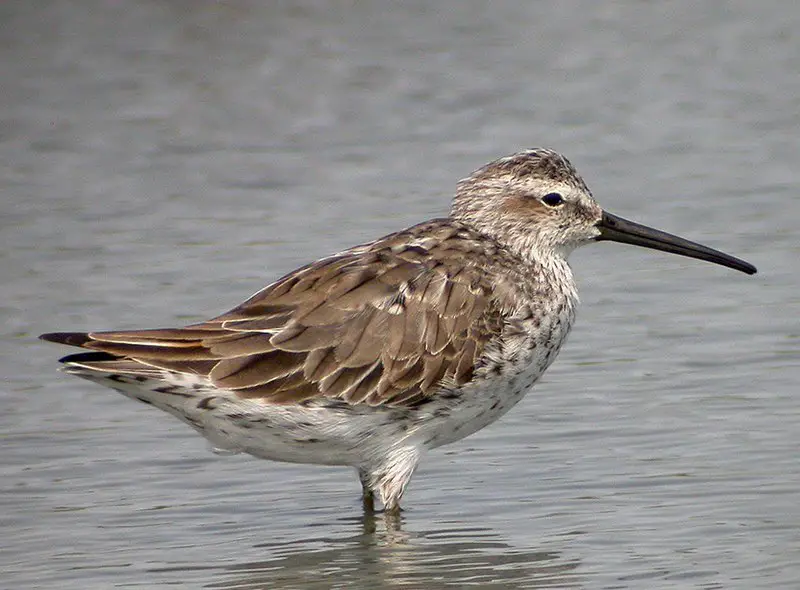
The Stilt Sandpiper (Calidris himantopus) is a small shorebird with ancient Greek origins. It has grey-coloured feathers, and its scientific name is derived from the terms “strap foot” or “thong foot”.
This bird bears some resemblance to smaller calidrid sandpipers, also known as ‘stints’. Through recent DNA sequence information, it was found that this species of birds are closely related to other wading shorebirds such as curlews and godwits.
They can usually be seen along the edges of rivers and creeks in shallow waters where they feed on aquatic insects like beetles, flies, mayflies etc., which makes them an important part of their ecosystem’s food chain.
The stilt sandpiper population appears to have been stable over time but further research needs to be done in order for us to understand more about this unique species.Scientific classification:
| Kingdom | Animalia |
| Phylum | Chordata |
| Class | Aves |
| Order | Charadriiformes |
| Family | Scolopacidae |
| Genus | Calidris |
| Species | C. himantopus |
Also Featured In: Common Northwest Territories Birds, Birds that Live in Tabasco
43. Caribbean Martin

The Caribbean martin is a large swallow that can be found throughout the Caribbean, except on Cuba and Isla de la Juventud.
It has at various times been thought to be related to the purple martin but more recently it has been recognised as its own species – Progne dominicensis.
This species is closely related to both the Cuban martin (P. cryptoleuca) and South American martins (S. chirica).
The adult birds have predominantly white underparts with grey-brown upper parts and black wings.
Their tail feathers are forked in shape making them very distinctive when flying through their habitats of open woodlands, savannas or mangroves near bodies of water such as lakes or rivers where they feed mainly on insects like dragonflies or termites.Scientific classification:
| Kingdom | Animalia |
| Phylum | Chordata |
| Class | Aves |
| Order | Passeriformes |
| Family | Hirundinidae |
| Genus | Progne |
| Species | P. dominicensis |
44. Ruddy Quail-Dove
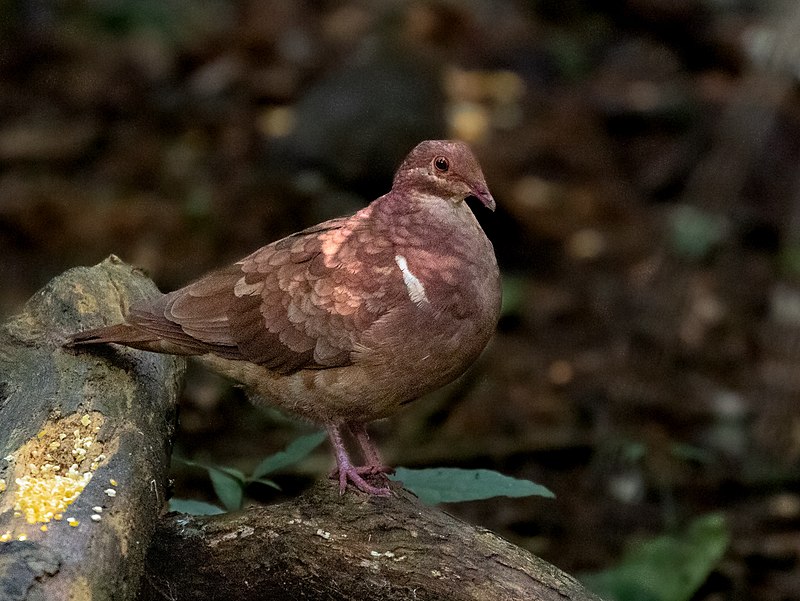
The Ruddy Quail-Dove is a beautiful bird native to the West Indies, Central and South America. It has a reddish brown plumage with dark spots on the wings and neck that give it an attractive appearance.
Its size ranges from 19–28 cm in length. The dove builds its nest either on shrubs or sometimes directly on the ground, laying two buff-colored eggs as part of their breeding cycle.
In recent years, there have been sightings of this species as far north as Florida and Texas proving just how resilient these birds are.
They feed mainly upon fruits found in woodland areas but also consume small invertebrates at times too.
All in all, this stunningly colored creature makes for an amazing addition to any environment they inhabit.Scientific classification:
| Kingdom | Animalia |
| Phylum | Chordata |
| Class | Aves |
| Order | Columbiformes |
| Family | Columbidae |
| Genus | Geotrygon |
| Species | G. montana |
Also Featured In: Most Common Birds Found in Nayarit,
45. Ruddy Duck
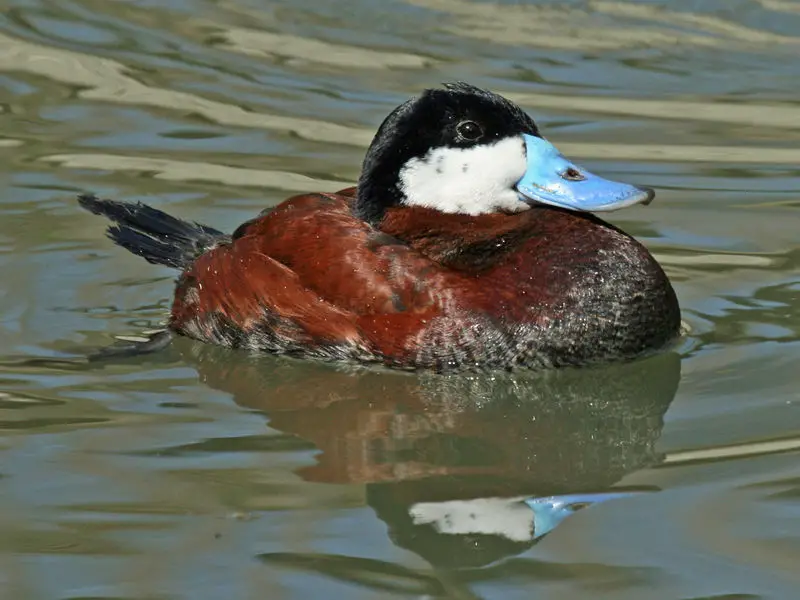
The Ruddy Duck is a North American species of duck native to Jamaica, known for its sharp tail.
It was formally described in 1789 by the German naturalist Johann Friedrich Gmelin and placed into Carl Linnaeus’ Systema Naturae.
These ducks are medium-sized with males having greyish cheeks and forehead, while females have brown heads. Both sexes also feature an orange bill with blue base and white patch on their faces near their bills.
In winter months they can be found inhabiting freshwater ponds, lakes or marshes where they feed mainly on aquatic vegetation like algae or small insects, mollusks or crustaceans as well as plant material from land nearby.
They tend to flock together during migration season when going southwards for warmer climates but usually remain solitary throughout other times of the year unless breeding which takes place between April-June each year involving nest building activities such as gathering materials for lining nests made close to water sources before laying eggs that will hatch after about one month�s time.Scientific classification:
| Kingdom | Animalia |
| Phylum | Chordata |
| Class | Aves |
| Order | Anseriformes |
| Family | Anatidae |
| Genus | Oxyura |
| Species | O. jamaicensis |
Also Featured In: birds of New Mexico, Water Birds Live around Us
46. Cinnamon Teal
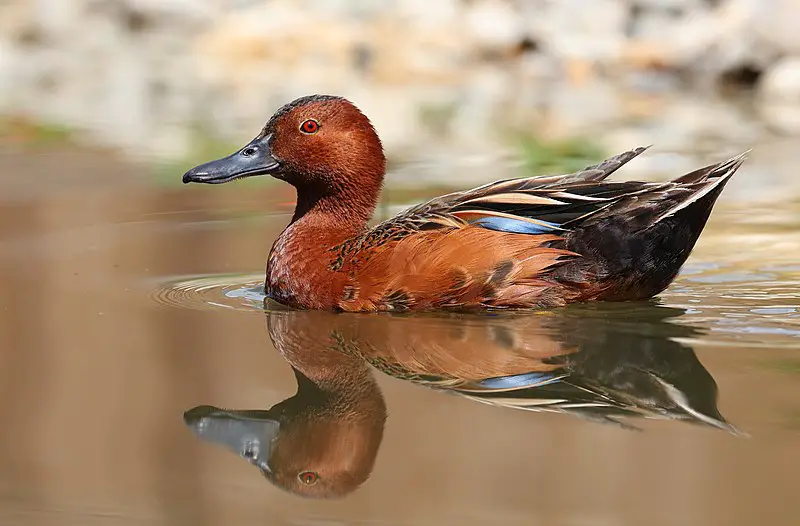
The Cinnamon Teal is a species of duck found in western North and South America. The males are bright reddish-brown while the female’s plumage is duller brown.
They inhabit marshes and ponds, feasting on plants–mainly seeds, roots, stems and leaves. Both genders have dark bills but it’s the male that stands out with its cinnamon-red head & body as well as red eye.
For nesting they prefer areas near shallow water where there are plenty of aquatic vegetation – often making their nests among grasses or cattails to conceal themselves from predators like foxes & raccoons.
These impressive birds also migrate during springtime; travelling far distances across open waters between continents – an incredible feat for such small creatures.Scientific classification:
| Kingdom | Animalia |
| Phylum | Chordata |
| Class | Aves |
| Order | Anseriformes |
| Family | Anatidae |
| Genus | Spatula |
| Species | S. cyanoptera |
Also Featured In: birds of Wyoming, Most Common Lake Birds
47. Western Sandpiper
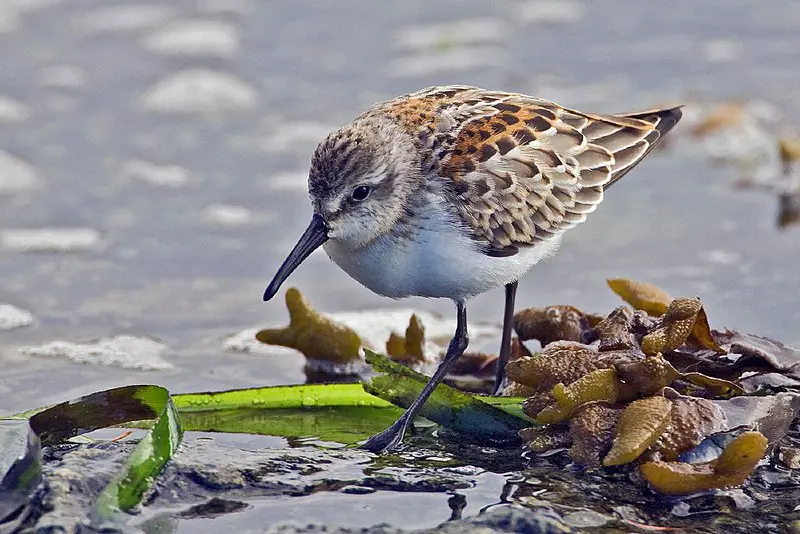
The Western sandpiper is a small shorebird found in North America. Its genus name, Kalidris, comes from the Ancient Greek term used by Aristotle for some grey-colored waterside birds.
The species name, mauri, is named after Italian botanist Ernesto Mauri. This species is one of the most abundant shorebirds in North America, with a population in the millions. Western sandpipers have dark legs and a short, straight bill.
They are often seen running quickly along the shorelines, probing the sand for insects and small crustaceans.
During breeding season, they nest in the Arctic tundra, and during migration, they can be found on mudflats and beaches along the Pacific Coast as well as inland shallow freshwater wetlands.Scientific classification:
| Kingdom | Animalia |
| Phylum | Chordata |
| Class | Aves |
| Order | Charadriiformes |
| Family | Scolopacidae |
| Genus | Calidris |
| Species | C. mauri |
Also Featured In: Birds that Live in San Francisco Bay Area, Estuaries Birds
48. Pomarine Jaeger
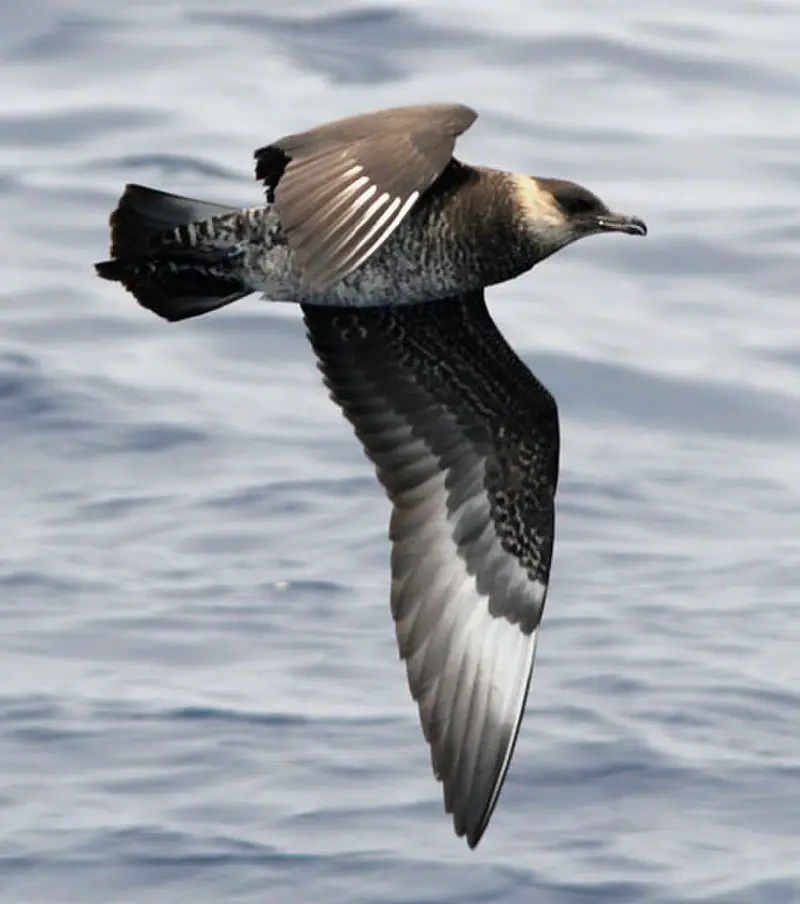
The Pomarine jaeger is a migratory seabird that belongs to the skua family Stercorariidae. It spends winter at sea in tropical oceans.
Although its relationships are not entirely understood, its mitochondrial DNA is most similar to the great skua while its behavior and morphology relate more to lesser skuas, such as the parasitic jaeger.
This bird’s distinctive features include a black cap and a thick, hooked bill that it uses to snatch fish from other seabirds.
It has a white belly and dark grey-brown plumage on its upper parts, making it easily recognizable as it reaps through the ocean in search of prey.
The Pomarine jaeger is a fascinating bird that plays an important role in maintaining the ecological balance of the ocean.Scientific classification:
| Kingdom | Animalia |
| Phylum | Chordata |
| Class | Aves |
| Order | Charadriiformes |
| Family | Stercorariidae |
| Genus | Stercorarius |
| Species | S. pomarinus |
Also Featured In: Birds that Live in Svalbard, Birds That Live in Spitsbergen
49. Martinique Oriole
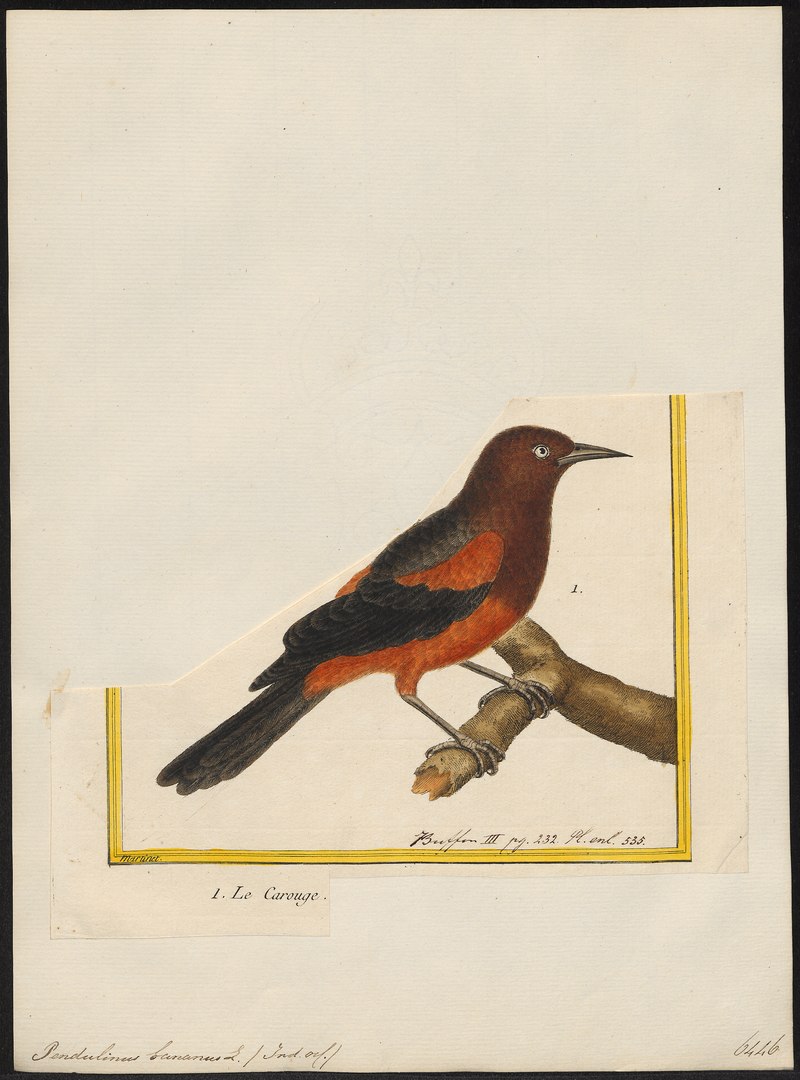
The Martinique oriole is a unique bird species found only on the island of Martinique in the Eastern Caribbean. These orioles prefer to live in diverse habitats including subtropical dry forests, moist lowland forests, mangrove forests, and plantations.
With an attractive appearance, these birds are known for their striking black and yellow feathers. They are active and agile creatures that are excellent at catching insects to eat.
Due to deforestation and habitat destruction, the population of Martinique orioles has declined rapidly, making them critically endangered.
Conservation efforts are essential for the survival of this rare bird species.Scientific classification:
| Kingdom | Animalia |
| Phylum | Chordata |
| Class | Aves |
| Order | Passeriformes |
| Family | Icteridae |
| Genus | Icterus |
| Species | I. bonana |
50. White-Tailed Nightjar
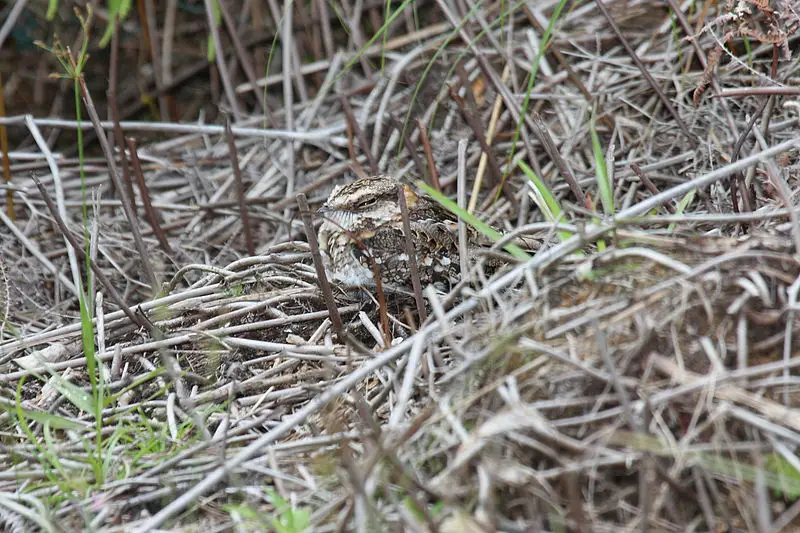
The white-tailed nightjar is a bird species belonging to the Caprimulgidae family. It inhabits the tropical areas of Central and South America.
This nocturnal bird was first described by German naturalist Johann Friedrich Gmelin in 1789 as part of Linnaeus’s Systema Naturae.
White-tailed nightjars have a unique and agile flying pattern, which makes them skilled at catching insects in mid-air.
They are distinguished by their long wings and tail feathers, as well as their cryptic coloration that allows them to be camouflaged against their surroundings during the day.
Interestingly, male white-tailed nightjars make a unique “peent” call to attract females during the breeding season.
Despite being widespread throughout their range, there is little information available on the status of white-tailed nightjar populations.Scientific classification:
| Kingdom | Animalia |
| Phylum | Chordata |
| Class | Aves |
| Clade | Strisores |
| Order | Caprimulgiformes |
| Family | Caprimulgidae |
| Genus | Hydropsalis |
| Species | H. cayennensis |
51. Black-Rumped Waxbill
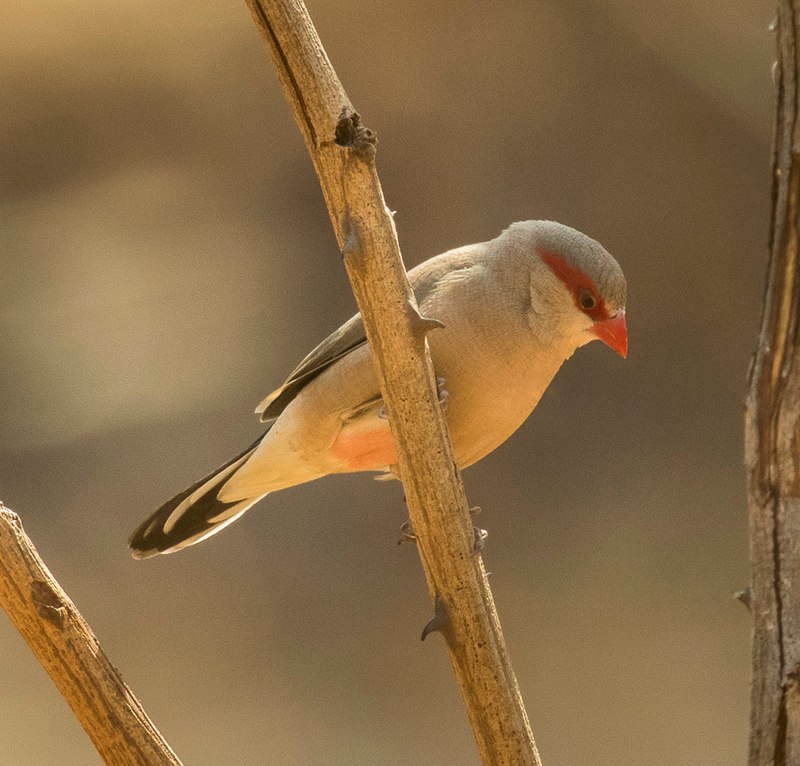
The Black-rumped waxbill is a species of finch that can be found in various countries across Southern Africa. With its black rump and red beak, it is easily distinguishable.
This bird’s global range is estimated to be around 2,000,000 square kilometers. Interestingly, it has also been introduced to France by Guadeloupe.
Overall, the Black-rumped waxbill is a relatively common species that can be found in a variety of different habitats throughout Southern Africa.Scientific classification:
| Kingdom | Animalia |
| Phylum | Chordata |
| Class | Aves |
| Order | Passeriformes |
| Family | Estrildidae |
| Genus | Estrilda |
| Species | E. troglodytes |